
Ultimate Camping in 2024
Table Of Contents
- Tent Camping
- RV Camping
- Backpacking Camping
- Campsite Selection
- Campfire Cooking
- Camping and Hiking
- Camping and Fishing
- Camping and Canoeing/Kayaking
- Camping Wildlife Watching
- Camping Gear
- Camping Essentials
- Camping Tips and Tricks
- Camping with Kids
- Camping Destinations
- Camping in Different Seasons
- Camping Etiquette
- Camping Safety
- Frequently Asked Questions
- Conclusion
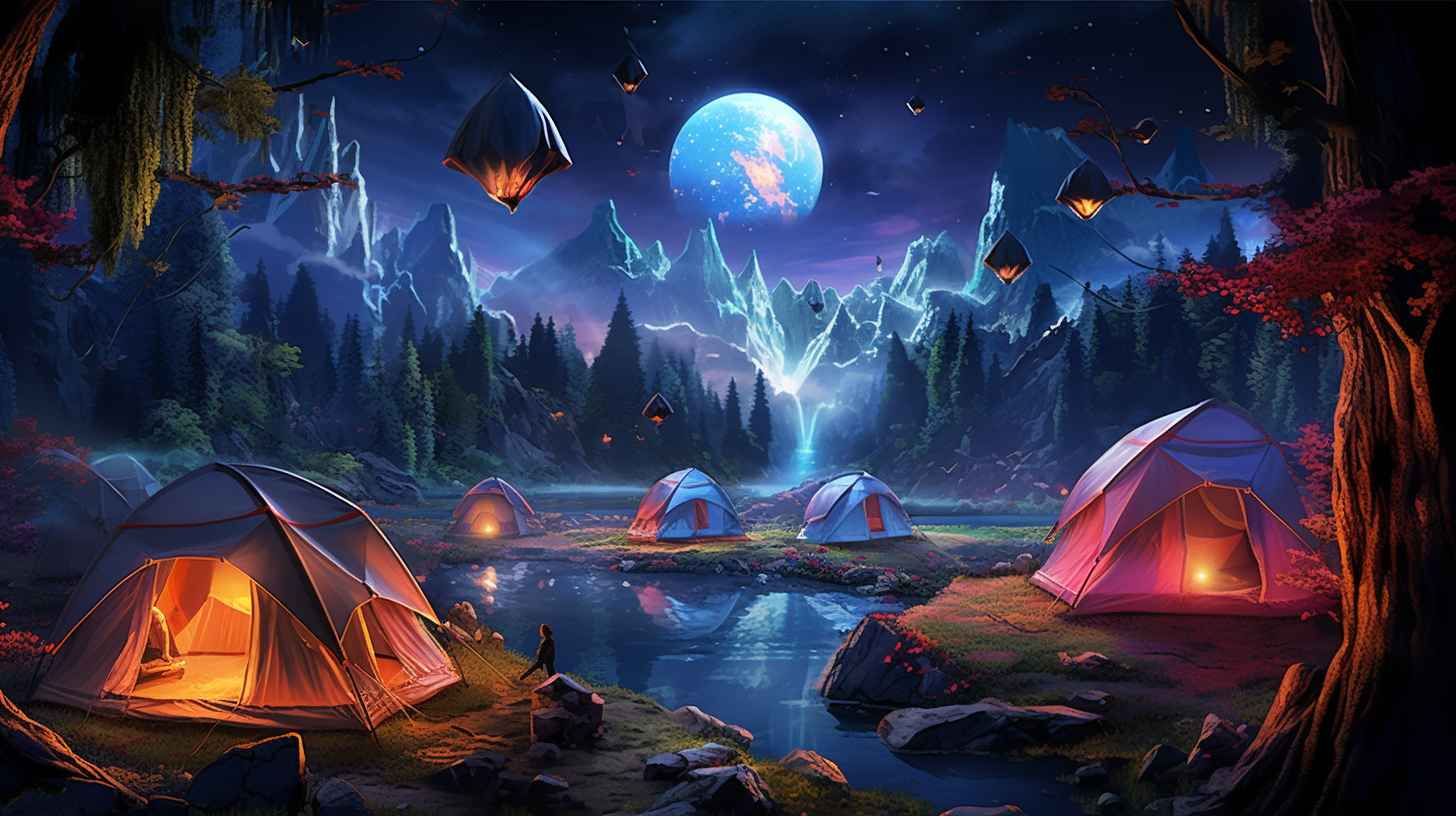
Looking to take your camping experience to the next level in 2024? Look no further, because ultimate camping is here.
Whether you prefer tent camping, RV camping, or backpacking camping, there are endless possibilities for you to explore.
But it doesn’t stop there. From selecting the perfect campsite to mastering the art of campfire cooking, this discussion will cover everything you need to know to make your camping trip unforgettable.
So get ready to embrace the great outdoors and discover the ultimate camping experience that awaits you.
Tent Camping
When it comes to tent camping, there are a few key points to consider.
First, choosing the right tent is crucial for a comfortable and enjoyable experience.
Next, knowing how to set up your tent properly will ensure a stable and secure shelter.
Lastly, taking care of your tent and performing regular maintenance will help prolong its lifespan and keep it in good condition for future camping trips.
Choosing the Right Tent
To ensure a comfortable camping experience, selecting the perfect tent is essential. When choosing a tent, consider the following factors:
-
Tent materials: Look for tents made from durable and weather-resistant materials such as nylon or polyester. These materials will keep you dry and protected from the elements.
-
Tent size: Determine how many people will be sleeping in the tent and choose a size accordingly. A larger tent will provide more space for comfort and storage.
-
Tent features: Consider features like a rainfly, vestibule, and mesh panels for ventilation. These features will enhance your camping experience.
-
Tent durability: Look for tents with sturdy poles and reinforced seams. A durable tent will last longer and withstand harsh weather conditions.
-
Tent price: Set a budget and find a tent that offers the best value for your money. Consider the quality and features of the tent in relation to its price.
Setting Up a Tent
You can easily set up your tent by following these simple steps.
First, lay out the tent footprint to protect the bottom of your tent from moisture and sharp objects.
Next, assemble the tent poles according to the manufacturer’s instructions and slide them through the designated sleeves or clips.
Once the poles are in place, secure the tent to the ground using tent stakes, making sure they’re firmly anchored.
To ensure proper ventilation, open the windows or vents of the tent to allow air to flow through.
Finally, double-check that all the components are properly connected and the tent is taut.
With these tent setup tips, you’ll be ready to enjoy a comfortable and hassle-free camping experience.
Tent Care and Maintenance
Taking proper care of your tent is essential for ensuring its longevity and optimal performance during your camping trips. Here are some important tips for tent care and maintenance:
-
Tent Cleaning: After each camping trip, make sure to clean your tent thoroughly with mild soap and water. Remove any dirt, debris, or stains from both the interior and exterior of the tent.
-
Tent Storage: Properly store your tent in a dry and cool place to prevent mold and mildew growth. Avoid storing it in a tight stuff sack for extended periods.
-
Tent Repair: Regularly inspect your tent for any signs of damage, such as tears or broken zippers. Address any repairs promptly to prevent further damage.
-
Tent Maintenance: Keep the tent stakes, guy lines, and zippers in good condition by regularly checking and lubricating them. This will ensure that your tent remains sturdy and functional.
-
Tent Care: Avoid setting up your tent on rough surfaces or under low-hanging branches to prevent punctures and tears. Additionally, use a footprint or groundsheet to protect the tent floor from abrasion.
RV Camping
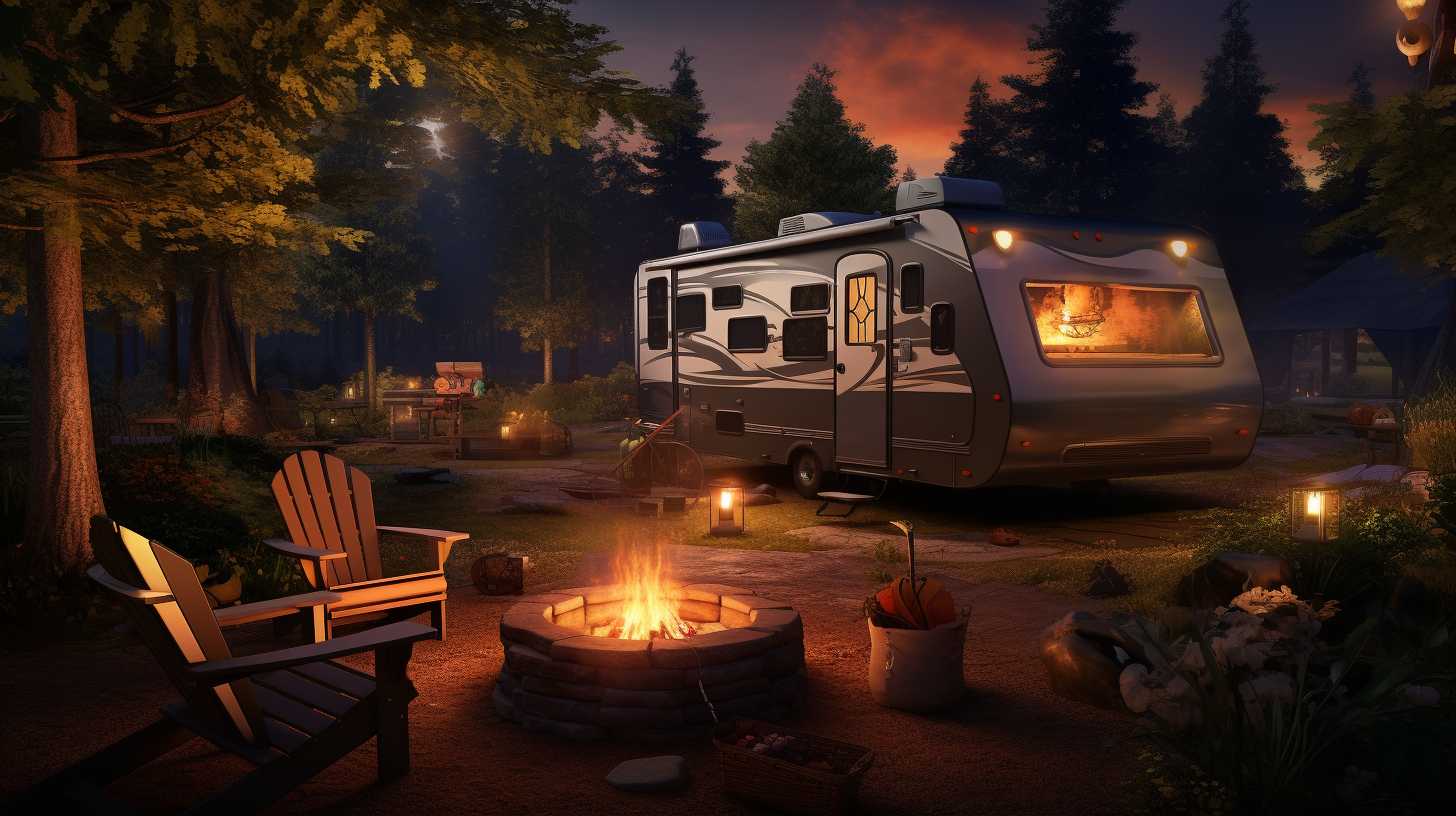
Are you ready to hit the road and experience the ultimate camping adventure in 2024? RV camping is the perfect way to explore the great outdoors while enjoying the comforts of home. From luxurious motorhomes to cozy camper vans, there are various types of RVs to choose from.
Whether you’re a seasoned RVer or new to the world of RV camping, these tips will help you make the most of your trip.
Lastly, don’t forget to prioritize RV maintenance to ensure a smooth and hassle-free journey.
Types of RVs
When choosing an RV for your camping adventure, it’s important to understand the different types available to ensure you find the perfect fit for your needs. Here are some options to consider:
-
Motorhomes: These self-contained vehicles offer the convenience of driving and living in the same space, with various sizes and amenities to choose from.
-
Travel Trailers: These towable units can be detached from the towing vehicle, providing flexibility and allowing you to explore your camping destinations freely.
-
Fifth Wheels: Similar to travel trailers, but with a raised front section that extends over the bed of a pickup truck, offering additional living space and stability.
-
Pop-up Campers: Lightweight and easy-to-tow, these foldable trailers provide a comfortable camping experience while being compact and affordable.
-
Toy Haulers: Perfect for outdoor enthusiasts, these RVs have a designated space in the back to store and transport motorcycles, ATVs, or other recreational vehicles.
Consider your budget, desired amenities, and camping preferences when deciding which type of RV to choose.
Don’t forget to check out RV rental options, RV accessories, RV camping destinations, and RV maintenance tips to enhance your camping experience.
RV Camping Tips
To enhance your RV camping experience, consider these helpful tips. Below is a table with essential information to guide you in making the most out of your trip:
| RV Camping Tips | Tent Camping Hacks | Campfire Cooking Techniques | Backpacking Gear Essentials | Campsite Selection Tips |
|---|---|---|---|---|
| Plan your route | Use a tarp under your tent | Use a grill or tripod | Pack light and compact | Check for amenities |
| Check the weather | Bring foam floor tiles | Use foil packets for meals | Invest in quality gear | Look for level ground |
| Pack essentials | Hang a lantern | Use a dutch oven | Bring warm and durable clothing | Consider privacy |
| Stay organized | Utilize storage pockets | Use a cast-iron skillet | Carry a first-aid kit | Avoid flood-prone areas |
RV Maintenance
Enhancing your RV camping experience also involves proper maintenance to ensure smooth and enjoyable trips. Here are some essential aspects of RV maintenance to keep in mind:
-
RV Maintenance: Regularly check and maintain your RV’s engine, tires, brakes, and electrical systems to prevent any unexpected breakdowns during your camping trips.
-
Tent Care: If you use a tent for camping, make sure to clean and dry it thoroughly after each use to prevent mold and mildew growth. Repair any tears or damages promptly to extend its lifespan.
-
Backpacking Gear: Keep your backpacking gear clean and well-organized. Check for any damages, such as broken zippers or torn straps, and repair or replace them as needed.
-
Campfire Cooking: Properly clean your campfire cooking equipment after each use to remove any food residue and prevent rust or corrosion. Store them in a dry place to avoid moisture damage.
-
Camping Hygiene: Practice good camping hygiene by packing biodegradable soap, hand sanitizer, and toilet paper. Dispose of waste properly and follow Leave No Trace principles to protect the environment.
Backpacking Camping
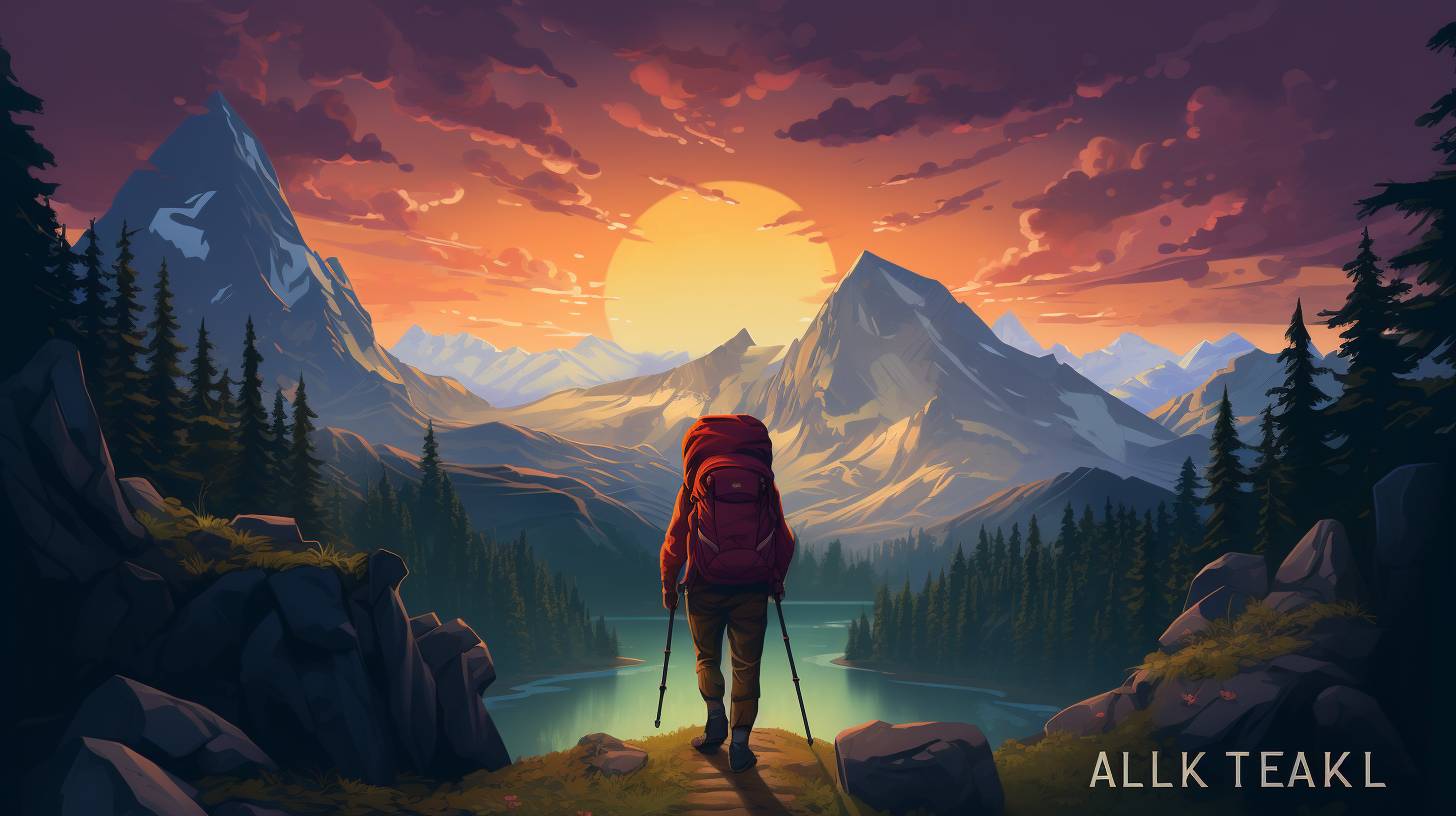
Are you ready to embark on an epic backpacking adventure?
Before you hit the trails, it’s crucial to have the essential backpacking gear that will make your journey comfortable and safe.
From a sturdy backpack to a reliable tent, make sure you’re well-equipped for the challenges ahead.
Essential Backpacking Gear
For the ultimate backpacking camping experience, make sure to pack these essential gear items:
-
Backpacking essentials: This includes a lightweight tent, a sleeping bag, a sleeping pad, and a backpack specifically designed for hiking trips. These items will ensure your comfort and safety throughout your journey.
-
Hiking gear: Don’t forget to bring a sturdy pair of hiking boots, a map and compass for navigation, a headlamp for night hikes, and a hiking pole for added stability on uneven terrain. These items will make your hiking experience more enjoyable and safer.
-
Campsite selection: Look for a campsite that offers a level ground, proximity to water sources, and protection from wind and rain. These factors will contribute to a good night’s sleep and a comfortable stay.
-
Campfire cooking: Bring a lightweight stove, cookware, and utensils for preparing meals at your campsite. This will allow you to enjoy hot and delicious meals even in the wilderness.
-
Camping hygiene: Pack biodegradable soap, a portable water filter, and toilet paper for maintaining cleanliness and sanitation during your backpacking adventure. Taking care of hygiene is crucial for your well-being and the environment.
Packing Tips for Backpacking
To ensure a successful backpacking camping trip, it’s crucial to pack your gear efficiently and smartly. Lightweight packing is key when you’re carrying everything on your back.
Start by choosing gear that’s lightweight and compact, such as a lightweight tent, sleeping bag, and cooking stove. When it comes to food storage, opt for lightweight and durable containers that won’t add unnecessary weight to your pack.
Water purification is essential to stay hydrated on the trail. Carry a water filter or purification tablets to ensure safe drinking water.
Don’t forget to invest in a good pair of hiking boots that provide support and comfort for long hikes.
Lastly, a good quality sleeping pad will provide insulation and cushioning for a restful night’s sleep.
Lightweight Backpacking Techniques
When it comes to backpacking camping, mastering lightweight techniques is essential for a more enjoyable and efficient outdoor experience. Here are some tips to help you lighten your load and make the most of your backpacking adventure:
-
Invest in ultralight gear: Look for backpacking essentials that are lightweight and compact, such as a lightweight tent, sleeping bag, and cooking equipment.
-
Choose trail food wisely: Opt for lightweight and high-calorie options like dehydrated meals, energy bars, and nuts to fuel your body on the trail.
-
Consider water purification: Instead of carrying heavy water bottles, use a lightweight water filter or purification tablets to ensure safe drinking water.
-
Be prepared for emergencies: Pack a lightweight first aid kit, emergency shelter, and a whistle for signaling in case of emergencies.
-
Practice Leave No Trace: Minimize your impact on the environment by following Leave No Trace principles, such as packing out your trash and avoiding unnecessary damage to the trails.
Campsite Selection
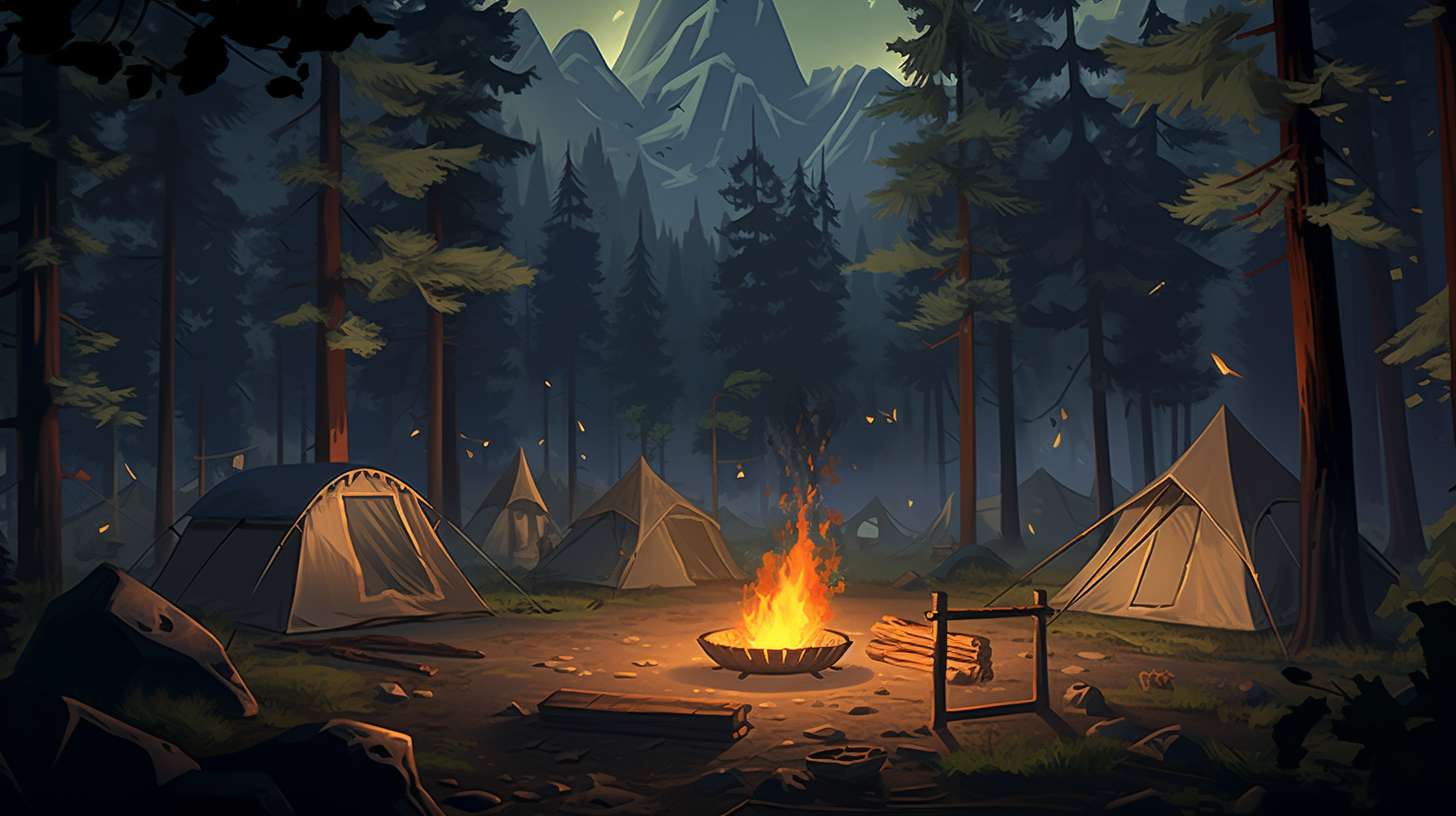
When choosing the right campground, consider factors such as:
- Proximity to hiking trails, water sources, and scenic views.
- Look for campsite amenities like picnic tables, fire pits, and access to clean restrooms.
- Safety is also crucial, so check for well-maintained paths, proper lighting, and nearby emergency services.
Choosing the Right Campground
Choosing the right campground is essential for a successful and enjoyable camping experience. Here are some important factors to consider when selecting your campsite:
-
Campground amenities: Look for campgrounds that offer amenities such as clean restrooms, showers, picnic tables, fire pits, and access to water and electricity.
-
Campground reservations: Check if the campground requires reservations and make sure to secure your spot in advance to avoid any last-minute disappointments.
-
Campground fees: Consider the fees associated with the campground and ensure they fit within your budget.
-
Campground rules: Familiarize yourself with the campground’s rules and regulations to ensure a smooth and respectful camping experience for everyone.
-
Campground location: Choose a campground that suits your preferences, whether it’s near hiking trails, lakes, or other attractions.
Campsite Amenities
Consider the amenities available at your campsite to enhance your camping experience. When tent camping, it is important to choose the right tent that suits your needs. Look for a tent that is easy to set up and has enough space for you and your camping gear. Once you have chosen the right tent, make sure to properly set it up to ensure a comfortable and secure shelter. Additionally, take care of your tent by regularly cleaning and drying it, and repairing any damages to prolong its lifespan. By taking these steps, you can ensure that your tent will provide a cozy and safe haven during your camping adventure.
| Campsite Amenities | Description |
|---|---|
| Campfire Pit | Gather around the campfire for warmth and fun |
| Picnic Table | Enjoy meals and games with family and friends |
| Restroom Facilities | Convenient access to toilets and showers |
| Water Source | Essential for drinking, cooking, and cleaning |
| Camp Store | Purchase camping essentials and snacks |
Campsite Safety
To ensure a safe and secure camping experience, prioritize selecting a campsite that meets all of your safety requirements. Here are some essential considerations to keep in mind:
-
Tent Safety: Look for a campsite with level ground and no sharp rocks or tree branches that could damage your tent.
-
Campsite Security: Choose a campsite with good visibility, allowing you to keep an eye on your surroundings and potential intruders.
-
Fire Safety: Ensure your campsite has a designated fire ring or pit and keep flammable materials away from the flames.
-
Wildlife Encounters: Opt for a campsite away from areas known for high wildlife activity and use bear-resistant food containers to prevent unwanted encounters.
-
Emergency Preparedness: Familiarize yourself with the campsite’s emergency procedures and have essential supplies like a first aid kit and emergency contact information readily available.
Campfire Cooking
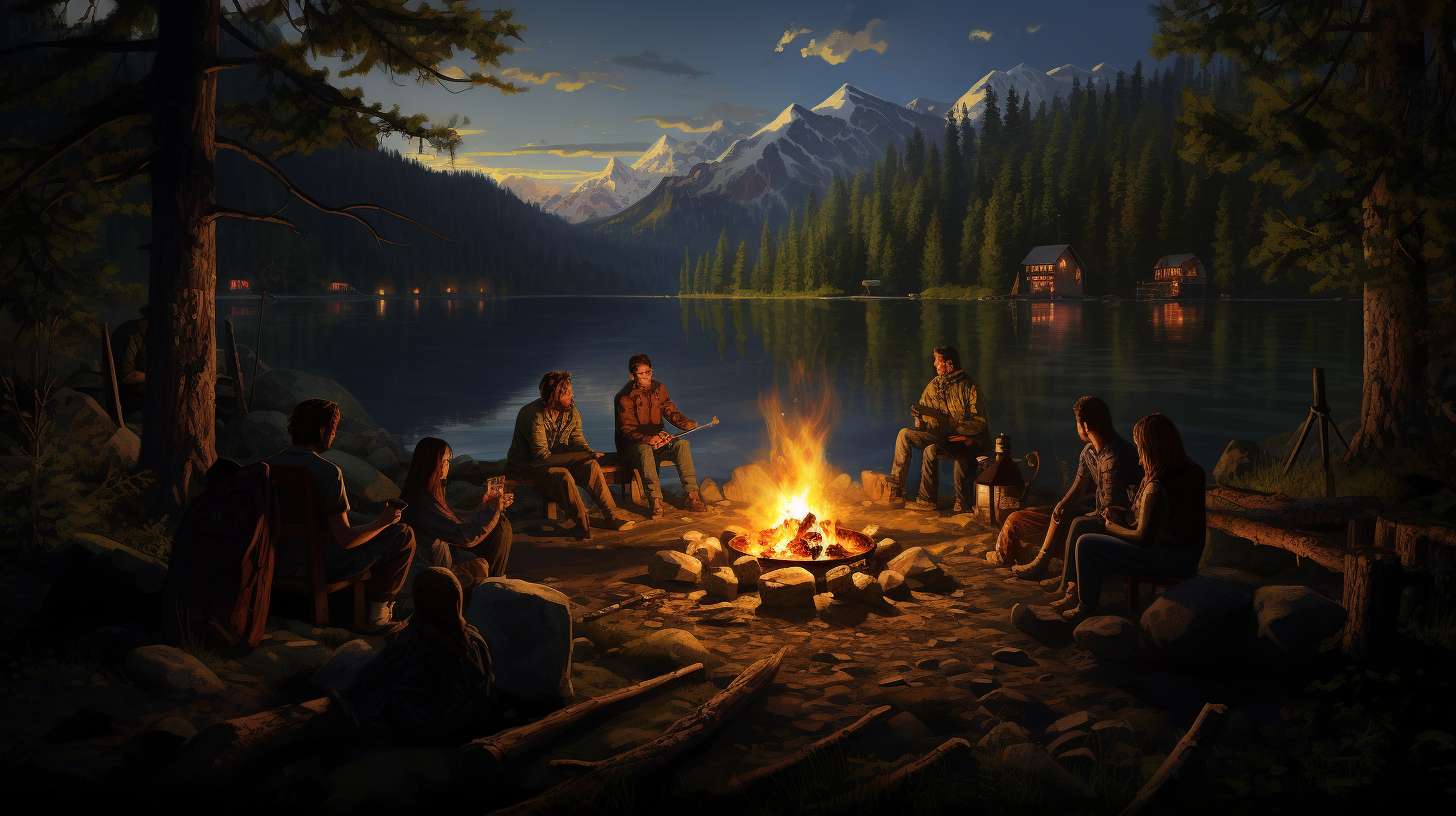
When it comes to campfire cooking, you’ll need the right equipment, delicious recipes, and above all, safety precautions. Whether it’s a portable grill, a cast iron skillet, or a dutch oven, having the proper tools will make your cooking experience a breeze.
From classic s’mores to foil-wrapped meals, there are endless recipes to satisfy your taste buds. However, it’s essential to remember safety guidelines such as clearing the area, extinguishing the fire completely, and handling hot utensils with caution.
Campfire Cooking Equipment
Get ready to elevate your camping culinary experience with top-notch campfire cooking equipment. Here are five essential items to enhance your campfire cooking:
-
Cast Iron Skillet: Perfect for cooking everything from bacon and eggs to stir-fries and even pizza.
-
Grill Grate: Transform your campfire into a grill with this versatile accessory, ideal for cooking steak, burgers, and veggies.
-
Dutch Oven: A must-have for slow-cooked meals like stews, chili, and even bread.
-
Campfire Tripod: Hang a pot or kettle over the fire for soups, hot drinks, or boiling water.
-
Fireproof Gloves: Protect your hands while handling hot cookware and moving firewood.
Campfire Cooking Recipes
Enhance your campfire cooking experience with these delicious and easy-to-make recipes.
When it comes to campfire cooking, there are a variety of techniques and equipment you can use to create mouthwatering meals. Whether you’re grilling, roasting, or baking, the campfire offers a unique and flavorful cooking experience.
Try out these campfire cooking recipes to satisfy your taste buds while enjoying the great outdoors. From classic s’mores and foil packet meals to cast iron skillet desserts, there’s something for everyone.
Remember to follow campfire cooking safety guidelines, such as keeping a safe distance from the fire, using long utensils to avoid burns, and properly extinguishing the flames when you’re finished.
With these campfire cooking tips and recipes, you’ll be able to create memorable meals and enjoy the ultimate camping experience.
Campfire Safety
To ensure a safe and enjoyable campfire cooking experience, it’s important to follow proper guidelines and precautions. Here are some essential campfire safety tips to keep in mind:
-
Always check local regulations and campfire rules before lighting a fire.
-
Clear the area around the campfire site of any flammable materials, such as dry leaves or branches.
-
Keep a fire extinguisher nearby and know how to use it in case of an emergency.
-
Follow fire safety guidelines by keeping the fire small and under control.
-
Never leave the campfire unattended and make sure it’s completely extinguished before leaving the site.
Camping and Hiking
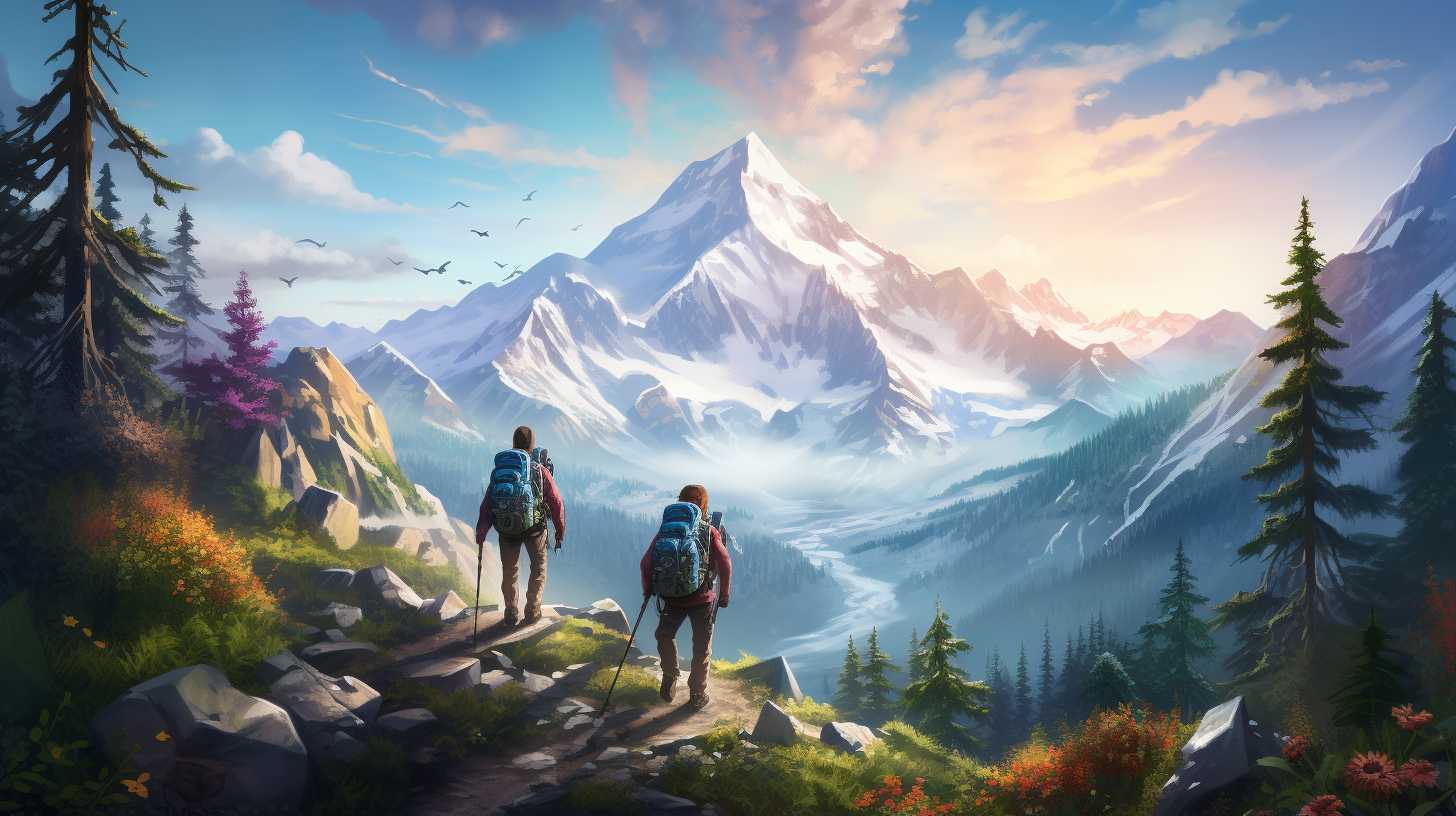
Now let’s talk about hiking gear, the essential items that will make your hiking experience more enjoyable and comfortable.
From sturdy hiking boots to a reliable backpack, having the right gear is crucial for a successful hike.
Additionally, we’ll explore some of the most breathtaking hiking trails that you can explore, providing you with a variety of options to suit your skill level and preferences.
Lastly, we’ll share some valuable hiking safety tips to ensure that your adventure in the great outdoors is both fun and secure.
Hiking Gear
Make sure you pack the essential hiking gear for your camping and hiking adventure in 2024. Here are some must-haves that will make your hiking experience more enjoyable:
-
Hiking boots: Invest in a good pair of sturdy and waterproof hiking boots to protect your feet and provide comfort on rugged terrains.
-
Hiking backpacks: Opt for a spacious and lightweight backpack with multiple compartments to carry all your essentials like water, snacks, maps, and extra clothing.
-
Hiking trails: Research and choose the best hiking trails based on your fitness level and preferences. Consider factors like distance, difficulty level, and scenic beauty.
-
Hiking tips: Stay hydrated, wear layers, pack a first aid kit, and inform someone about your hiking plans for safety. Plan your hikes in advance and check the weather conditions.
-
Hiking essentials: Carry a compass, headlamp, sunscreen, insect repellent, and a multi-tool for emergencies.
Hiking Trails
Researching and selecting the best hiking trails will ensure an unforgettable camping and hiking experience in 2024.
When it comes to camping and hiking, the right trail can make all the difference. Whether you’re looking for a challenging trek or a leisurely stroll, there are countless hiking trails to choose from. Some trails even offer additional activities like camping and fishing, allowing you to fully immerse yourself in the great outdoors. If you’re a wildlife enthusiast, you can also find hiking trails that offer opportunities for wildlife watching.
When researching hiking trails, be sure to consider the location and difficulty level. Additionally, don’t forget to follow camping safety tips and pack accordingly for your adventure.
With the right hiking trail, you’ll be well on your way to discovering amazing camping destinations and creating memories that will last a lifetime.
Hiking Safety Tips
To ensure a safe and enjoyable camping and hiking experience, it’s important to follow these essential safety tips:
-
Choose appropriate hiking footwear: Wearing sturdy and comfortable shoes will provide traction and support, reducing the risk of slips and falls on the trail.
-
Master trail navigation: Familiarize yourself with the trail map, use GPS devices or compasses, and pay attention to trail markers to avoid getting lost.
-
Carry essential hiking safety equipment: Pack a first aid kit, a whistle for emergencies, a headlamp or flashlight, and a multi-tool for minor repairs.
-
Be prepared for wildlife encounters: Research the local wildlife and know how to react if you encounter them. Keep a safe distance and don’t feed or provoke them.
-
Practice emergency preparedness: Inform someone about your hiking plans, carry extra food and water, and know how to signal for help if needed.
Camping and Fishing
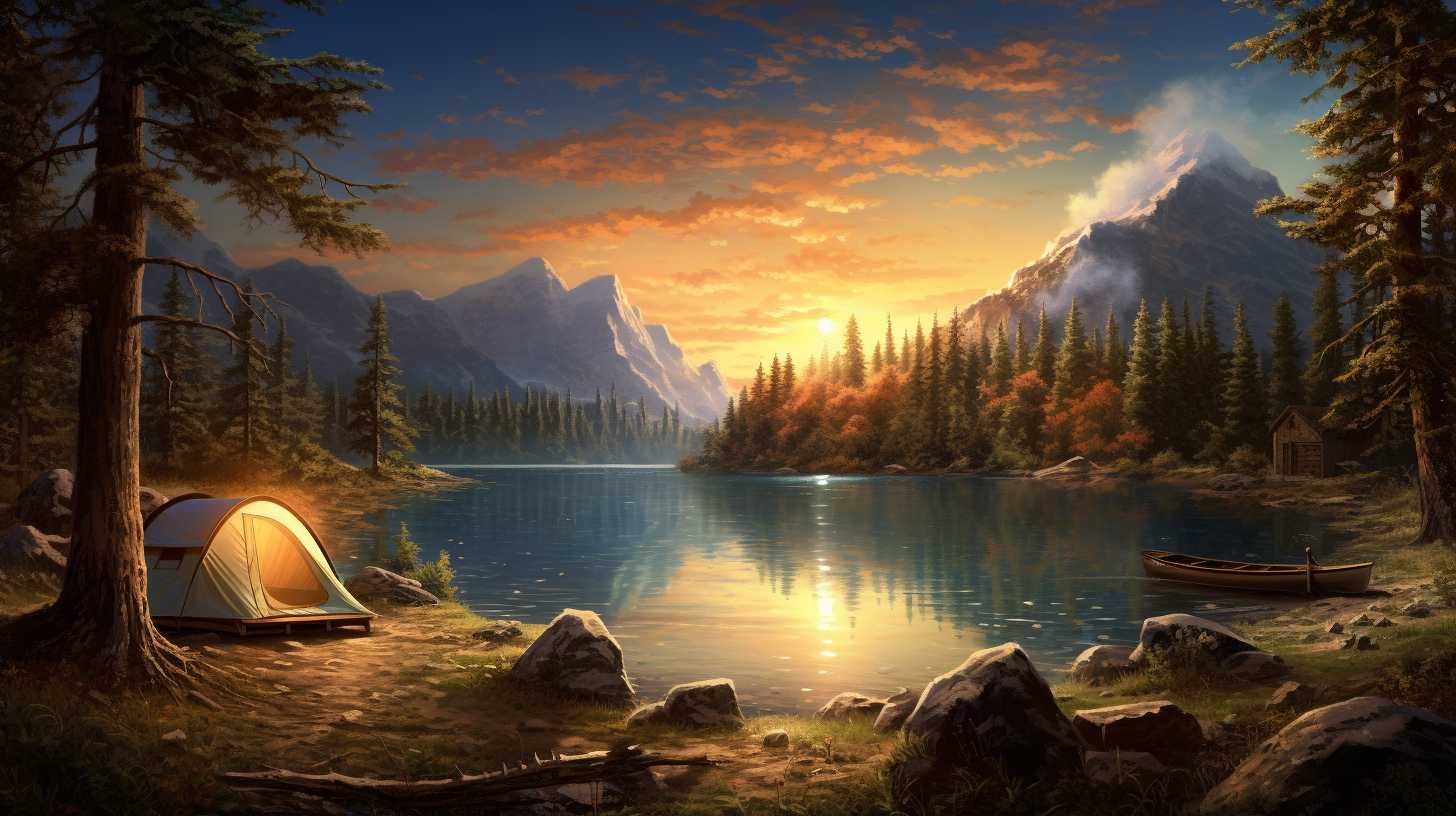
Are you ready to cast your line and reel in the big one?
When it comes to camping and fishing, having the right gear is essential.
From sturdy fishing rods and reels to tackle boxes filled with lures and bait, make sure you’re well-prepared for a successful fishing trip.
Fishing Gear
What essential fishing gear do you need for a successful camping and fishing trip? When it comes to fishing, having the right gear is crucial. Here are five essential items to ensure a great fishing experience:
-
Fishing rod and reel: Choose a rod and reel combo suitable for your fishing techniques and the type of fish you plan to catch.
-
Tackle box: Keep your hooks, lures, and other fishing accessories organized and easily accessible.
-
Fishing line: Make sure to have a variety of fishing lines with different strengths to match the fishing conditions.
-
Fishing license and regulations guide: Familiarize yourself with local fishing regulations to avoid any legal issues.
-
Safety equipment: Don’t forget to bring a life jacket, first aid kit, and other safety gear to ensure your fishing trip is both enjoyable and safe.
With these essential fishing gear items, you’ll be well-prepared for a successful camping and fishing adventure.
Fishing Techniques
Mastering effective fishing techniques is key to maximizing your success while camping and fishing. Whether you prefer fly fishing in a peaceful freshwater stream or tackling the icy depths of an ice fishing hole, understanding the nuances of each technique is essential.
Fly fishing involves delicately presenting an artificial fly to entice fish to bite, while ice fishing requires patience and the ability to locate fish through drilled holes in frozen lakes.
When it comes to freshwater fishing, casting techniques, such as the overhead cast or roll cast, can make all the difference in reaching your desired spot.
On the other hand, saltwater fishing demands knowledge of tides, currents, and different bait presentations.
Additionally, learning the art of fly tying can be beneficial for both freshwater and saltwater fishing, allowing you to create your own custom flies to attract fish.
Fishing Regulations
Understanding fishing regulations is crucial for a successful camping and fishing experience. To make the most of your time on the water, it’s important to know and follow the rules. Here are some key points to consider:
-
Fishing regulations: Familiarize yourself with the local fishing regulations, such as catch limits, size restrictions, and special seasons.
-
Fishing techniques: Learn different fishing techniques like fly fishing, baitcasting, or trolling to increase your chances of catching fish.
-
Wildlife photography tips: Capture stunning wildlife photos by practicing patience, using a telephoto lens, and respecting the animals’ space.
-
Canoe/kayak types: Choose the right canoe or kayak for your fishing adventure, depending on factors like stability, storage capacity, and ease of maneuverability.
-
Camping with kids: Make camping and fishing enjoyable for the whole family by involving kids in activities like setting up the campsite, fishing, and cooking.
Camping and Canoeing/Kayaking
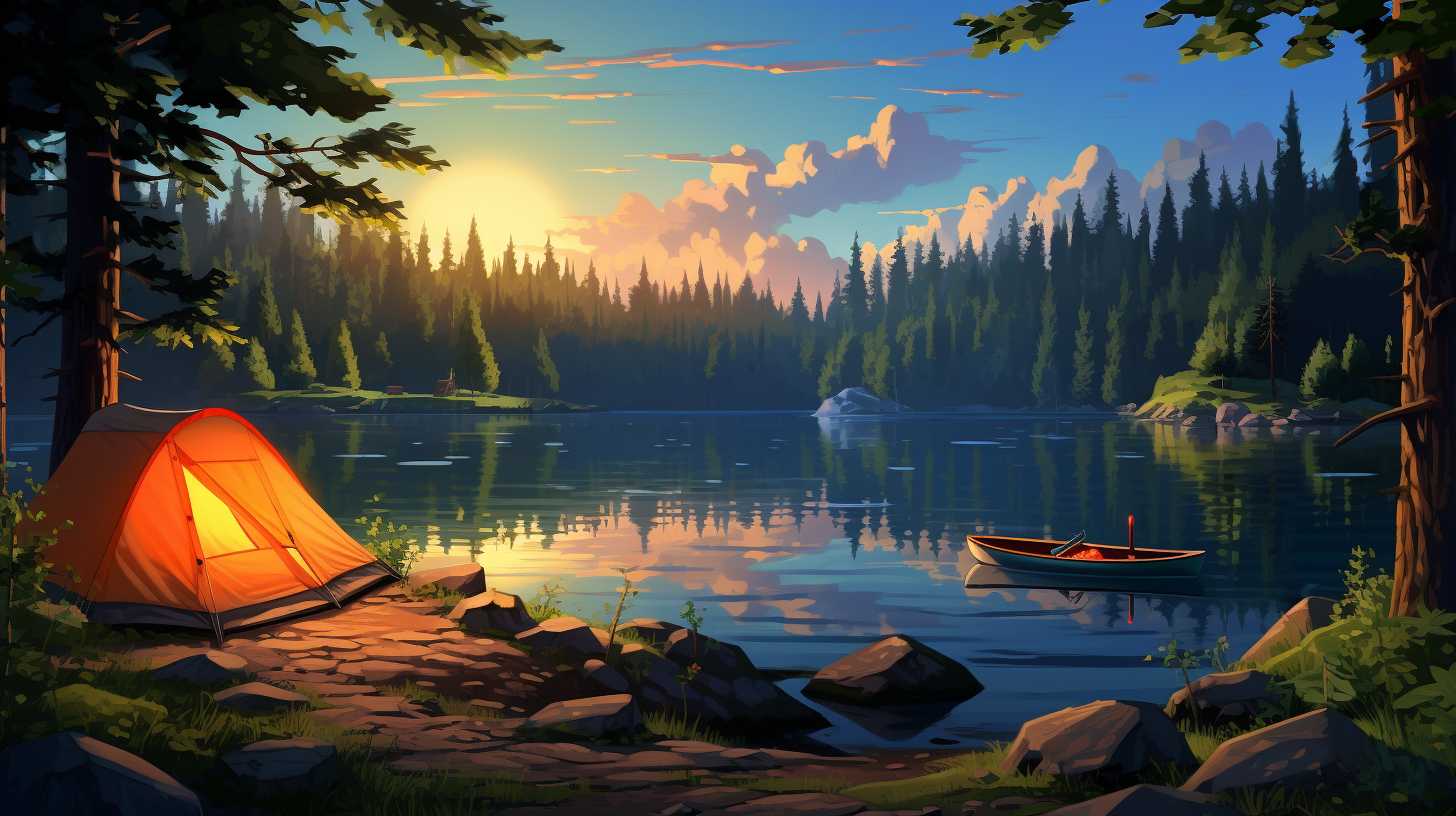
Let’s talk about the different types of canoes and kayaks you can use for your camping adventure. From traditional canoes to sit-on-top kayaks, each type offers its own set of advantages.
Next, we’ll explore various paddling techniques to help you navigate the water smoothly and efficiently.
Lastly, we’ll cover essential safety tips to ensure a secure and enjoyable canoeing or kayaking experience.
Canoe/Kayak Types
Choosing the right canoe or kayak for your camping and canoeing/kayaking adventures is essential for a successful and enjoyable experience. When it comes to canoe/kayak types, there are several options to consider. Here are some things to keep in mind:
- Canoe types: solo canoe, tandem canoe, recreational canoe, touring canoe, whitewater canoe.
- Kayak types: recreational kayak, touring kayak, whitewater kayak, fishing kayak, inflatable kayak.
To make the most of your time on the water, it’s important to learn proper paddle techniques. Safety should also be a top priority, so remember to follow safety tips such as wearing a life jacket and knowing your limits. When it comes to gear selection, make sure to have the necessary equipment like paddles, helmets, and dry bags.
Lastly, mastering water navigation skills will ensure that you can confidently explore new areas and enjoy the beauty of nature while camping.
Paddling Techniques
When it comes to enjoying your camping and canoeing/kayaking adventures to the fullest, mastering the art of paddling techniques is essential.
Not only will it improve your efficiency and speed on the water, but it will also enhance your overall water safety.
Whether you’re into kayak fishing, stand up paddleboarding, or even whitewater rafting, proper paddling techniques will make your experience more enjoyable and successful.
To ensure your safety, always wear a life jacket and be aware of your surroundings.
Practice different strokes, such as the forward stroke, sweep stroke, and draw stroke, to maneuver your kayak or canoe with ease.
Remember to engage your core muscles and use proper body posture to maximize your power and minimize strain.
With a solid grasp of paddling techniques, you’ll be ready to conquer any water adventure that comes your way.
Safety Tips for Canoeing/Kayaking
To ensure a safe and enjoyable canoeing or kayaking experience while camping, it’s important to follow these essential tips:
-
Equipment checklist: Before hitting the water, make sure to check your equipment for any damages or issues. Inspect your canoe or kayak, paddles, life jackets, and other safety gear.
-
Paddling techniques: Learn and practice proper paddling techniques to ensure efficient and controlled movement on the water. This will help you avoid fatigue and navigate with ease.
-
River navigation: Familiarize yourself with the river or waterway you’ll be paddling on. Research the route, be aware of any potential hazards or obstacles, and follow any signage or guidelines provided.
-
Weather conditions: Stay informed about the weather forecast before heading out. Avoid paddling in severe weather conditions such as storms or strong winds, as they can be dangerous.
-
Rescue and emergency procedures: Learn basic rescue and emergency procedures, such as how to perform self-rescue and assist others in need. Carry a whistle or signaling device to attract attention if necessary.
Camping Wildlife Watching
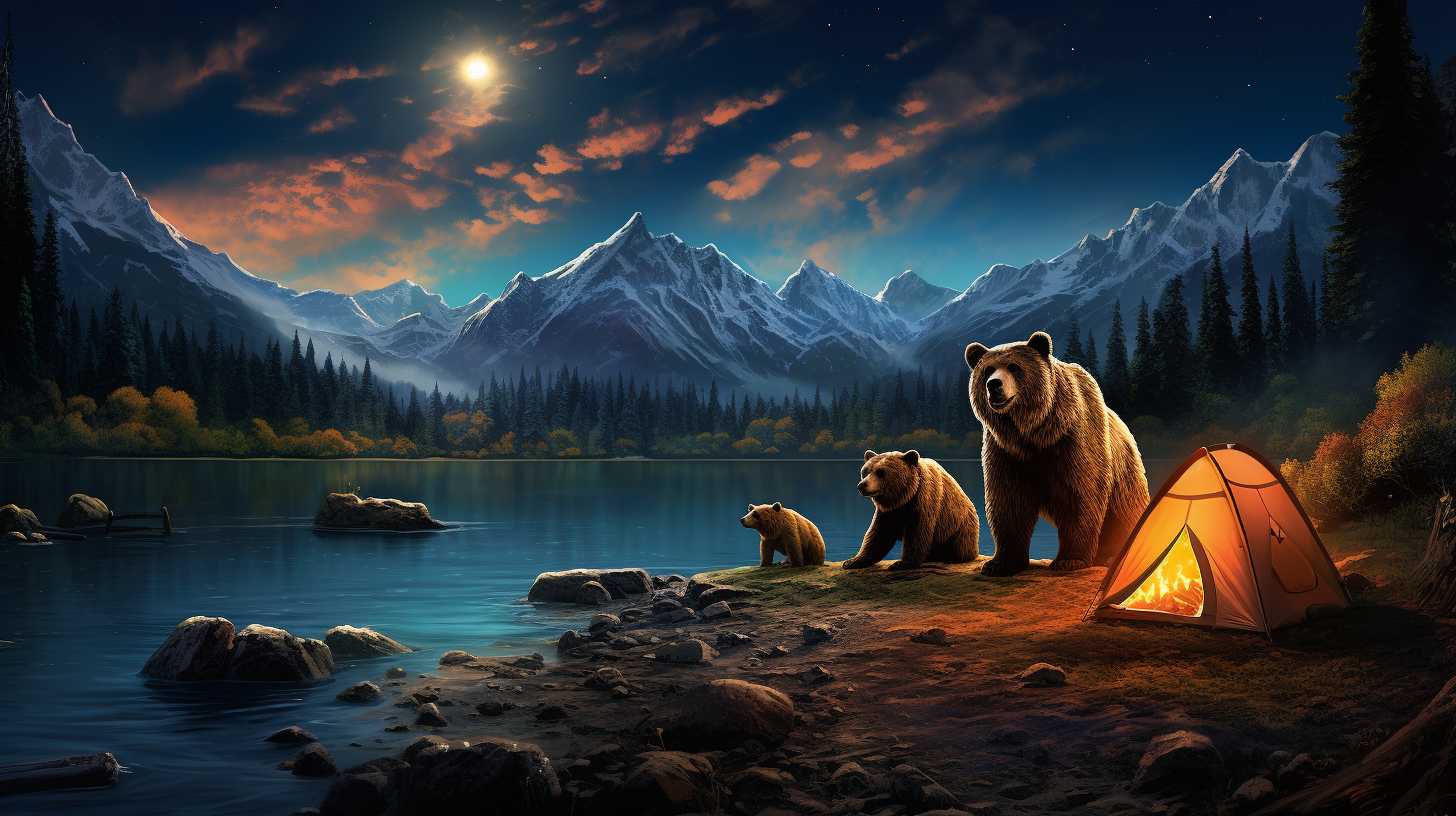
When it comes to camping wildlife watching, there are a few key points to keep in mind.
First, it’s important to learn how to identify different types of wildlife, so you can have a better understanding of what you’re observing.
Additionally, wildlife photography can be a great way to capture those special moments, so it’s helpful to know some tips and tricks for getting the best shots.
Lastly, it’s crucial to always respect wildlife and their habitats, keeping a safe distance and not disturbing their natural behaviors.
Identifying Wildlife
Enhance your camping experience by honing your skills in identifying wildlife. By learning to recognize different species and their behaviors, you can truly immerse yourself in the natural world around you.
Here are some tips to help you become a wildlife expert:
- Use wildlife observation techniques to quietly observe animals without disturbing them.
- Develop your wildlife tracking skills to identify signs of animal presence, such as footprints and scat.
Stay informed about wildlife conservation efforts to understand the importance of protecting these incredible creatures.
Seek out wildlife photography tips to capture stunning images of the animals you encounter.
Remember to always respect wildlife and their habitats, keeping a safe distance to ensure their well-being and your own enjoyment.
Wildlife Photography Tips
Capture stunning images of the wildlife you encounter while camping by following these wildlife photography tips. To ensure you get the best possible shots, it’s important to consider various aspects such as techniques, equipment, locations, lighting, and composition. By mastering these elements, you can create captivating photographs that truly showcase the beauty of nature.
Here are some valuable wildlife photography tips to get you started:
| Techniques | Equipment | Locations |
|---|---|---|
| Patience is key | Telephoto lens | National parks |
| Shoot in burst mode | Tripod | Wildlife reserves |
| Use a wide aperture | Camera bag | Nature preserves |
| Get down to their level | Remote shutter release | Wetlands |
Respecting Wildlife
To ensure a positive and safe wildlife watching experience while camping, it’s important to respect the animals and their natural habitats. Here are some tips to help you enjoy the wildlife while protecting their habitats and contributing to wildlife conservation:
-
Keep a safe distance: Maintain a respectful distance from animals to avoid disturbing their natural behaviors and to ensure your own safety during animal encounters.
-
Stay on designated trails: Stick to marked paths to minimize your impact on wildlife habitats and avoid disturbing their homes.
-
Don’t feed the animals: Feeding wildlife can disrupt their natural diet and behavior, and can also create dependency on human food sources.
-
Educate yourself: Learn about the local wildlife and their behaviors before your trip to enhance your understanding and appreciation of their natural habitats.
-
Leave no trace: Pack out all your trash and dispose of it properly to help protect the wildlife and their habitats.
Camping Gear
When it comes to camping gear, there are a few essentials that you can’t go without.
Sleeping bags are crucial for a comfortable night’s sleep, while camping tents provide protection from the elements.
Camping stoves allow you to cook delicious meals, and camping chairs provide a place to relax and unwind.
Don’t forget to bring along a camping lantern for when the sun goes down.
Sleeping Bags
The cozy warmth of a sleeping bag envelops you as you settle down for a restful night under the stars. Here are some things you should know about sleeping bags:
-
Insulation options: Sleeping bags can be insulated with down or synthetic materials. Down offers excellent warmth-to-weight ratio, while synthetics perform better in wet conditions.
-
Sleeping bag ratings: Temperature ratings indicate the lowest temperature at which a bag will keep you comfortable. Look for bags with lower temperature ratings if you plan to camp in colder conditions.
-
Sleeping bag shapes: Bags come in mummy, rectangular, and semi-rectangular shapes. Mummy bags offer a snug fit, while rectangular bags provide more room to move.
-
Sleeping bag materials: Common materials used for sleeping bags include nylon, polyester, and ripstop fabrics. Consider durability, weight, and breathability when choosing a material.
-
Sleeping bag care: Proper care involves storing your bag loosely, avoiding compression, and washing it according to the manufacturer’s instructions. Regular maintenance ensures longevity and optimal performance.
With these considerations in mind, you can choose the perfect sleeping bag for a cozy and comfortable camping experience.
Camping Tents
For a comfortable and protected camping experience, a high-quality tent is essential. When it comes to tent camping, choosing the right tent is crucial. Consider factors such as the number of people it can accommodate, the weather conditions you’ll be camping in, and the ease of setup. To help you visualize the different types of tents available, here’s a comparison table:
| Tent Type | Capacity | Weather Resistance |
|---|---|---|
| Dome | 2-4 people | Good |
| Cabin | 4+ people | Excellent |
| Backpacking | 1-2 people | Moderate |
Once you’ve selected your tent, make sure to set it up properly by following the instructions provided. Proper tent care and maintenance, such as cleaning and waterproofing, will ensure its longevity. Lastly, when selecting a campsite, choose a flat and elevated area away from potential hazards like tree branches or water runoff. With the right tent and careful consideration of these factors, you’ll have a great camping experience.
Camping Stoves
To enhance your camping experience, a reliable camping stove is a must-have piece of gear. Here are some key points to consider when choosing and using a camping stove:
-
Portable options: Look for compact and lightweight stoves that are easy to carry and set up at your campsite.
-
Fuel sources: Consider the availability and convenience of different fuel sources such as propane, butane, or liquid fuel.
-
Cooking techniques: Choose a stove that offers versatile cooking options, such as simmering or grilling, to meet your culinary needs.
-
Cleaning and maintenance: Opt for a stove with removable parts for easy cleaning and regular maintenance to ensure its longevity.
-
Safety precautions: Familiarize yourself with the stove’s safety features and follow proper guidelines for safe operation, including keeping it away from flammable materials and using it in well-ventilated areas.
Camping Chairs
When it comes to comfortable seating while camping, nothing beats a sturdy and portable camping chair. Whether you’re relaxing by the campfire or taking a break from hiking, having a comfortable camping chair is essential for enjoying the great outdoors.
Camping chair accessories such as cup holders, side tables, and storage pockets can enhance your camping experience by providing convenience and functionality.
When choosing a camping chair, it’s important to consider factors such as comfort, durability, and portability. Folding camping chairs are popular options as they’re easy to transport and store. Lightweight camping chairs are also great for backpacking trips.
Reading camping chair reviews can help you make an informed decision and ensure that you find the perfect chair for your camping adventures.
Camping Lanterns
Camping lanterns are essential for providing reliable and convenient lighting during your outdoor adventures. When choosing the perfect camping lantern, consider the following features:
-
Brightness options: Look for lanterns that offer adjustable brightness settings, allowing you to customize the amount of light needed for different situations.
-
Battery life: Opt for lanterns with long-lasting battery life to ensure you have ample light throughout your camping trip without constantly needing to replace batteries.
-
Lightweight design: Choose lanterns that are lightweight and compact, making them easy to carry and pack for your camping trips.
-
Waterproof features: Look for lanterns that are waterproof or water-resistant, providing durability and protection during unexpected rain showers or water-related activities.
-
Hanging options: Consider lanterns with built-in hooks or handles, allowing you to hang them inside your tent or in other areas for hands-free lighting.
Camping Coolers
Consider investing in a high-quality camping cooler to keep your food and drinks fresh and cold during your outdoor adventures.
When it comes to camping coolers, there are various portable options available to suit your needs. Look for coolers that offer excellent ice retention and utilize advanced insulation technology to keep your perishables cold for longer periods.
The cooler capacity is also an important factor to consider, as it determines how much food and drinks you can store.
Additionally, don’t forget to check out cooler accessories such as dividers, baskets, and cup holders, which can enhance your camping experience.
With a reliable camping cooler, you can enjoy refreshing beverages and delicious meals even in the great outdoors.
Camping Essentials
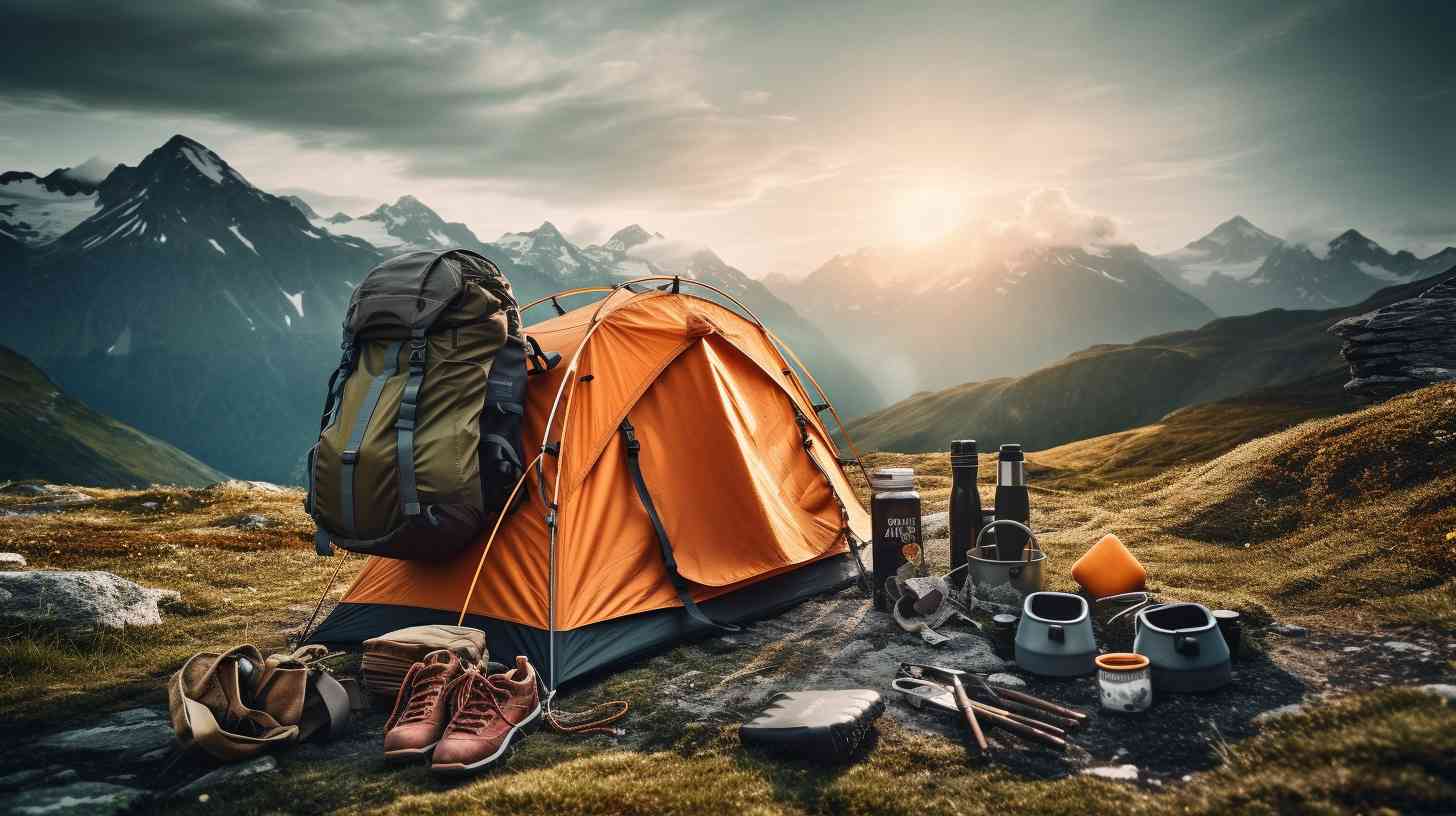
When it comes to camping, there are a few essential items that you simply can’t go without. First and foremost, a well-stocked first aid kit is a must-have for any outdoor adventure.
In addition, don’t forget to pack insect repellent and sunscreen to protect yourself from bugs and harmful UV rays.
And of course, don’t leave home without essential camping tools like a knife or multi-tool, as well as camping hygiene products to keep clean and fresh during your trip.
First Aid Kit
To ensure your safety and well-being during your camping trip, it’s essential to have a well-stocked first aid kit. Here are five items that should be included in your kit:
-
Bandages: These are crucial for treating wounds and preventing infection in emergency situations.
-
Antiseptic wipes: Use these to clean wounds before applying bandages or dressings.
-
Pain relievers: Include over-the-counter pain relievers like ibuprofen or acetaminophen to alleviate discomfort.
-
Tweezers: These are useful for removing splinters, ticks, or other foreign objects from the skin.
-
First aid manual: Having a guide that outlines first aid techniques and procedures can be invaluable, especially if you don’t have formal first aid training.
Insect Repellent
As you continue preparing for your ultimate camping adventure in 2024, don’t overlook the importance of including insect repellent in your camping essentials. Protecting yourself and your loved ones from pesky bugs is essential for a comfortable and enjoyable camping experience. When it comes to insect repellent alternatives, there are plenty of options to choose from. For those who prefer natural insect repellents, essential oils like citronella, lavender, and eucalyptus have proven to be effective. If you prefer a homemade insect repellent, a mixture of water, witch hazel, and essential oils can do the trick. For individuals with sensitive skin, it’s important to choose an insect repellent specifically formulated for sensitive skin. Additionally, there are insect repellents available for pets to ensure their protection as well. Remember to check the labels and choose the right repellent for your needs.
| Insect Repellent Alternatives | Natural Insect Repellents | Homemade Insect Repellent |
|---|---|---|
| Citronella | Citronella oil | Water |
| Lavender | Lavender oil | Witch hazel |
| Eucalyptus | Eucalyptus oil | Essential oils |
| Insect Repellent for Sensitive Skin | Insect Repellent for Pets | |
| DEET-free formulas | Insect repellent sprays | Pet-friendly repellents |
| Essential oil-based options | Collars | |
| Hypoallergenic options |
Sunscreen
Don’t forget to include sunscreen in your camping essentials for ultimate protection against harmful UV rays. Sunscreen is essential for keeping your skin safe while enjoying outdoor activities. Here are some key points to consider:
-
Sunscreen application: Apply sunscreen generously and evenly to all exposed skin, at least 15 minutes before sun exposure.
-
Sunscreen ingredients: Look for sunscreen with broad-spectrum protection, which shields against both UVA and UVB rays. Ingredients like zinc oxide and titanium dioxide provide effective protection.
-
Sunscreen for kids: Choose a sunscreen specifically formulated for children, with a higher SPF and gentle ingredients to avoid skin irritation.
-
Sunscreen alternatives: Consider using sun-protective clothing, wide-brimmed hats, and seeking shade during peak sun hours as additional measures of protection.
-
Sunscreen and outdoor activities: Remember to reapply sunscreen every two hours, especially after swimming or sweating, to maintain its effectiveness.
Camping Tools (Knife, Multi-tool, etc.)
When it comes to ultimate camping in 2024, having the right tools is essential, and one of the most important camping essentials is a reliable knife or multi-tool.
These camping tools serve multiple purposes and are crucial for equipment maintenance, gear selection, and safety precautions. A good knife or multi-tool can be used for cutting ropes, opening cans, and preparing food. Its sharp blade allows you to perform tasks with ease and precision.
However, it’s important to remember that safety should always come first when handling these tools. Always keep them in a secure sheath or pouch when not in use, and handle them with care to avoid accidents.
Furthermore, regular maintenance is necessary to ensure their longevity and functionality.
Camping Hygiene Products
To ensure cleanliness and comfort during your ultimate camping adventure in 2024, having the right camping hygiene products is essential. Here are five must-have items that will help you maintain hygiene in the outdoors:
-
Biodegradable soap: Use this to wash your hands, face, and body without harming the environment.
-
Toothbrush and toothpaste: Maintain your oral hygiene even in the wilderness.
-
Wet wipes: These are perfect for quick clean-ups and refreshing yourself on the go.
-
Hand sanitizer: Keep your hands germ-free when water isn’t readily available.
-
Portable shower: Stay fresh and clean by using a portable shower that can be easily set up in your campsite.
Camping Tips and Tricks

When it comes to camping, there are a few key tips and tricks that can make your experience much more enjoyable.
First, make sure to pack efficiently by organizing your gear and prioritizing the essentials.
Next, setting up camp efficiently is crucial - choose a level and well-drained area, and make sure to properly stake down your tent to withstand any weather conditions.
Lastly, remember to practice campsite organization and leave no trace principles to minimize your impact on the environment.
Packing Tips for Camping
Proper preparation is key to ensuring a successful camping trip, and that starts with efficiently packing all the necessary gear. To make your camping experience hassle-free, follow these tips:
-
Tent Packing: Roll up your tent tightly and secure it with bungee cords to save space in your backpack or car trunk.
-
Camping Checklist: Create a checklist of essential items such as food, water, cooking utensils, first aid kit, and navigation tools to avoid forgetting anything important.
-
Sleeping Bag Selection: Choose a sleeping bag that suits the weather conditions of your camping destination. Consider factors like temperature rating and insulation type.
-
Campsite Setup: Familiarize yourself with the campsite rules and regulations, and plan your setup accordingly. Make sure to pitch your tent on level ground and away from potential hazards.
-
Campfire Cooking: Pack lightweight and compact cooking equipment like a portable stove or a grill. Don’t forget to bring fire-starting tools and suitable cookware for your meals.
Setting Up Camp Efficiently
Setting up camp efficiently is crucial for a smooth and enjoyable camping experience. When it comes to tent camping, choosing the right tent is essential. Consider the size, durability, and ease of setup. Once you have the perfect tent, follow these steps to set it up efficiently:
- Find a level ground and clear any rocks or debris.
- Lay out the tent footprint and secure it with stakes.
- Assemble the poles and connect them to the tent.
- Attach the rainfly for added protection.
- Stake down the tent and adjust the guy lines for stability.
Taking care of your tent is equally important. Regularly clean and dry it, store it properly, and repair any damages promptly. By following these tips for setting up a tent and tent care and maintenance, you can ensure a hassle-free camping trip.
Campsite Organization
To maximize your camping experience, efficient campsite organization is key. Properly organizing your campsite ensures that you have everything you need within easy reach, making your camping trip more enjoyable.
Here are five tips for effective campsite organization:
-
Choose the right tent: Select a tent that suits your camping needs, considering factors such as size, weather resistance, and ease of setup.
-
Setting up a tent: Find a flat and level spot for your tent, clear any rocks or debris, and secure it with stakes and guy lines for stability.
-
Tent care and maintenance: Regularly clean and dry your tent to prevent mold and mildew. Repair any tears or damages promptly to prolong its lifespan.
-
Create designated areas: Establish separate areas for cooking, sleeping, and storing gear to keep your campsite organized and clutter-free.
-
Use storage solutions: Utilize gear organizers, storage bins, and hanging hooks to keep your camping essentials neatly organized and easily accessible.
Leave No Trace Principles
Make sure to practice Leave No Trace principles during your camping trip to minimize your impact on the environment. Responsible camping means adopting eco-friendly practices and minimizing your environmental impact. By following the leave no trace principles, you can ensure that the natural beauty of your camping destination remains untouched for future generations.
Start by planning ahead and preparing for your trip, so you can minimize waste and reduce your carbon footprint. When you arrive at your campsite, choose durable surfaces for setting up your tent and avoid damaging vegetation. Dispose of waste properly by packing out all trash and leaving no trace behind.
Respect wildlife and their habitats by observing from a distance and not feeding them. By practicing sustainable camping, you can preserve the environment’s integrity and enjoy the outdoors responsibly.
Camping Safety
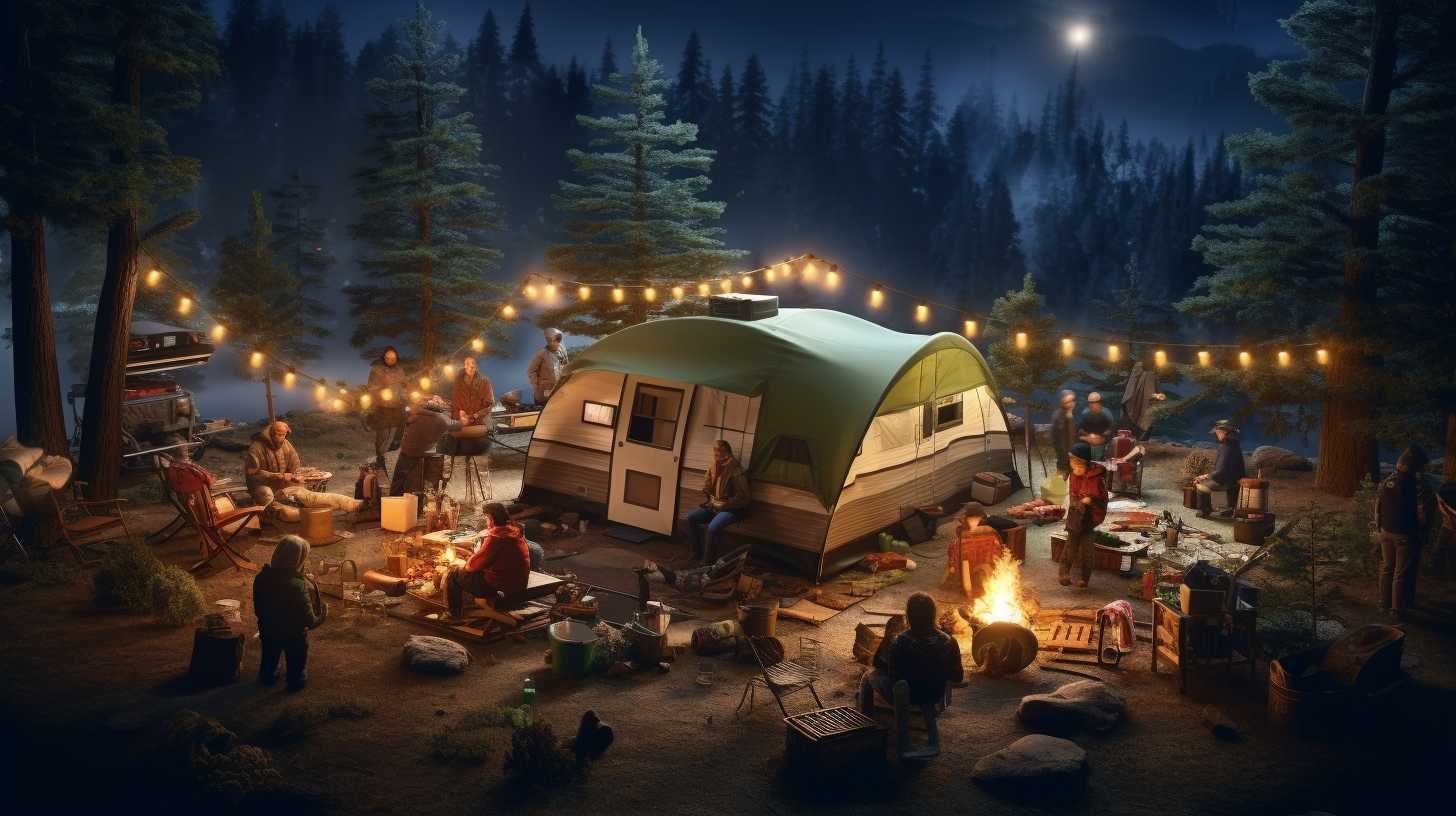
When it comes to camping, prioritizing safety is essential to ensure a successful and enjoyable outdoor adventure. Here are some camping safety tips to keep in mind:
-
Choose the right tent: Invest in a tent that suits your needs and can withstand different weather conditions.
-
Setting up a tent: Find a level ground and clear any sharp objects or debris before setting up your tent. Make sure to secure it properly to prevent it from collapsing.
-
Tent care and maintenance: Regularly check your tent for any damages or wear and tear. Repair or replace any broken parts to ensure its durability.
-
Stay organized: Keep your camping area tidy and free from clutter to avoid accidents or tripping hazards.
-
Be prepared: Pack essential safety items such as a first aid kit, flashlight, whistle, and extra batteries. Familiarize yourself with the campsite rules and emergency procedures.
Camping with Kids
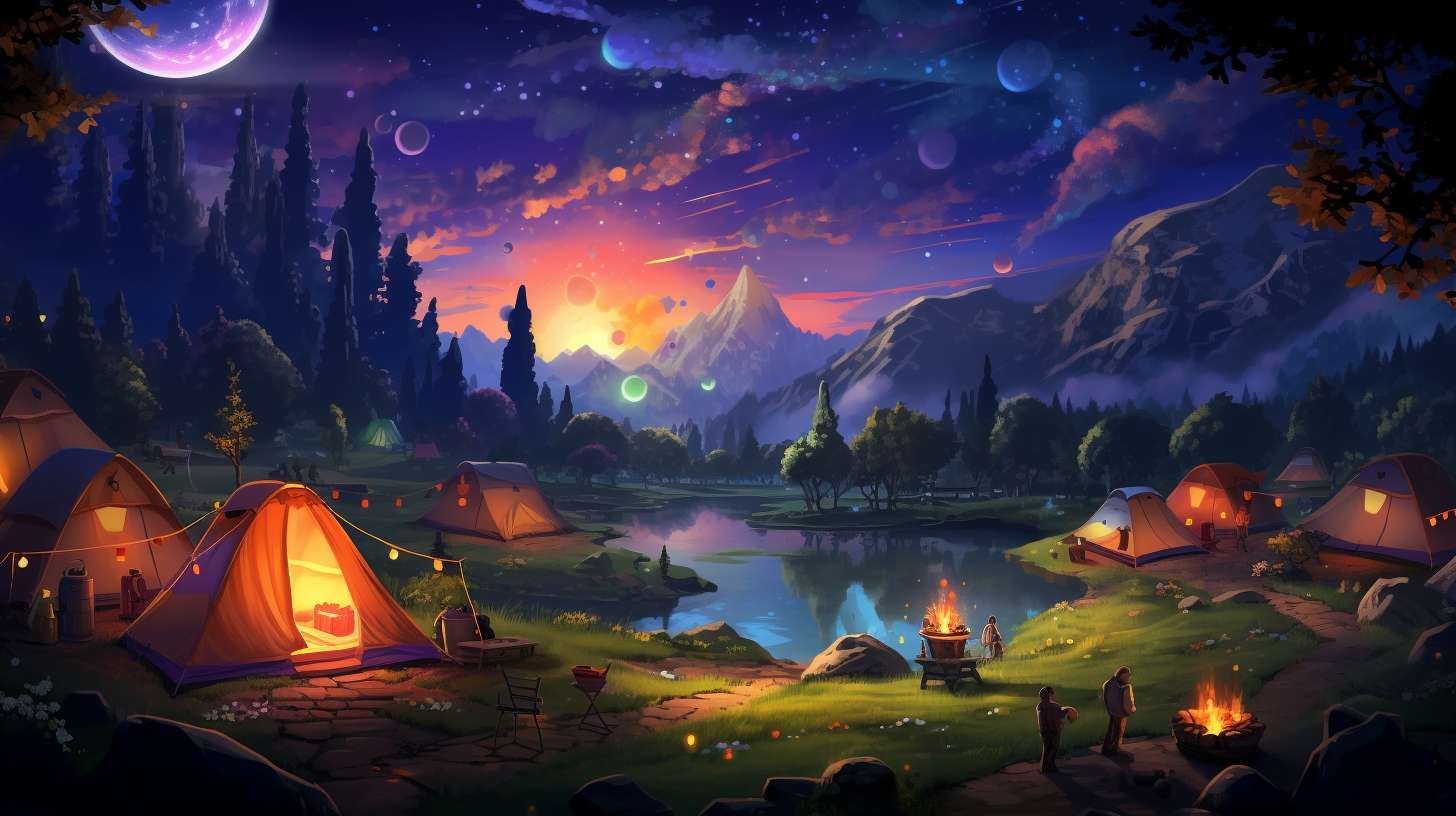
When it comes to camping with kids, there are several important points to consider.
First, you’ll want to find family-friendly campgrounds that offer amenities and activities suitable for children.
Next, it’s crucial to plan camping activities that are engaging and age-appropriate.
Lastly, prioritize safety by following camping safety tips and ensuring you have the necessary camping gear for kids.
Family-Friendly Campgrounds
For a memorable family camping experience, explore the wide range of family-friendly campgrounds available in 2024. These campgrounds offer a variety of activities and amenities that cater to both kids and adults. Here are some highlights to look forward to:
-
Family friendly activities: Campgrounds now provide a range of activities suitable for all ages, from arts and crafts to scavenger hunts, ensuring that everyone in the family stays entertained.
-
Kid friendly amenities: Many campgrounds now feature playgrounds, swimming pools, and even mini-golf courses, providing endless fun for the little ones.
-
Family bonding activities: Campgrounds offer activities that promote family bonding, such as group hikes, campfire storytelling, and outdoor movie nights, creating lasting memories for everyone.
-
Camping games: Campgrounds organize various games like sack races, tug of war, and relay races, ensuring hours of laughter and friendly competition.
-
Family friendly hiking trails: Explore the beauty of nature together with family-friendly hiking trails that are suitable for all skill levels, allowing everyone to enjoy the great outdoors.
These family-friendly campgrounds are designed to make your camping experience unforgettable, ensuring that both kids and adults have a fantastic time.
Camping Activities for Kids
To keep your kids engaged and entertained during your camping trip, there are numerous fun and exciting activities tailored specifically for them.
Start with camping games like flashlight tag or a game of capture the flag.
Encourage their creativity with outdoor crafts such as making leaf rubbings or building birdhouses out of natural materials.
Nature scavenger hunts are also a great way to explore the surroundings while learning about different plants and animals.
In the evenings, gather around the campfire and share campfire stories, creating lasting memories.
Don’t forget about camping safety tips, like teaching them how to properly use camping equipment and the importance of staying hydrated.
With these activities, your kids will have a blast and cherish their camping experience.
Safety Tips for Camping with Kids
Are you prepared to ensure the safety of your kids while camping? It’s important to prioritize their well-being to make the camping experience enjoyable for everyone. Here are some safety tips to keep in mind:
-
Supervise activities: Always keep an eye on your children during camping activities to prevent accidents or injuries.
-
Choose safe camping games: Opt for games that are age-appropriate and don’t pose any danger to your kids.
-
Engage in camping crafts: Encourage your children to indulge in safe and creative crafts that can enhance their camping experience.
-
Pack healthy camping snacks: Provide your kids with nutritious snacks to keep them energized and hydrated throughout the camping trip.
-
Prioritize camping safety: Teach your children about fire safety, wildlife awareness, and the importance of following camping rules to ensure a safe and fun-filled adventure.
Camping Gear for Kids
Now that you’ve prioritized the safety of your kids while camping, let’s explore essential camping gear specifically designed for children. When it comes to kids camping activities, having the right gear can make all the difference in ensuring a fun and memorable experience. Here are some must-have items for your little adventurers:
| Gear | Description | Benefits |
|---|---|---|
| Camping games | Fun and interactive games for outdoor play | Keeps kids entertained and promotes physical activity |
| Camping crafts | Art supplies and DIY kits for creative expression | Encourages imagination and enhances fine motor skills |
| Camping snacks | Healthy and easy-to-pack snacks for on-the-go | Provides energy and satisfies hunger during outdoor adventures |
| Camping safety | Flashlights, whistles, and first aid kits | Ensures kids are prepared and safe in case of emergencies |
Camping Destinations
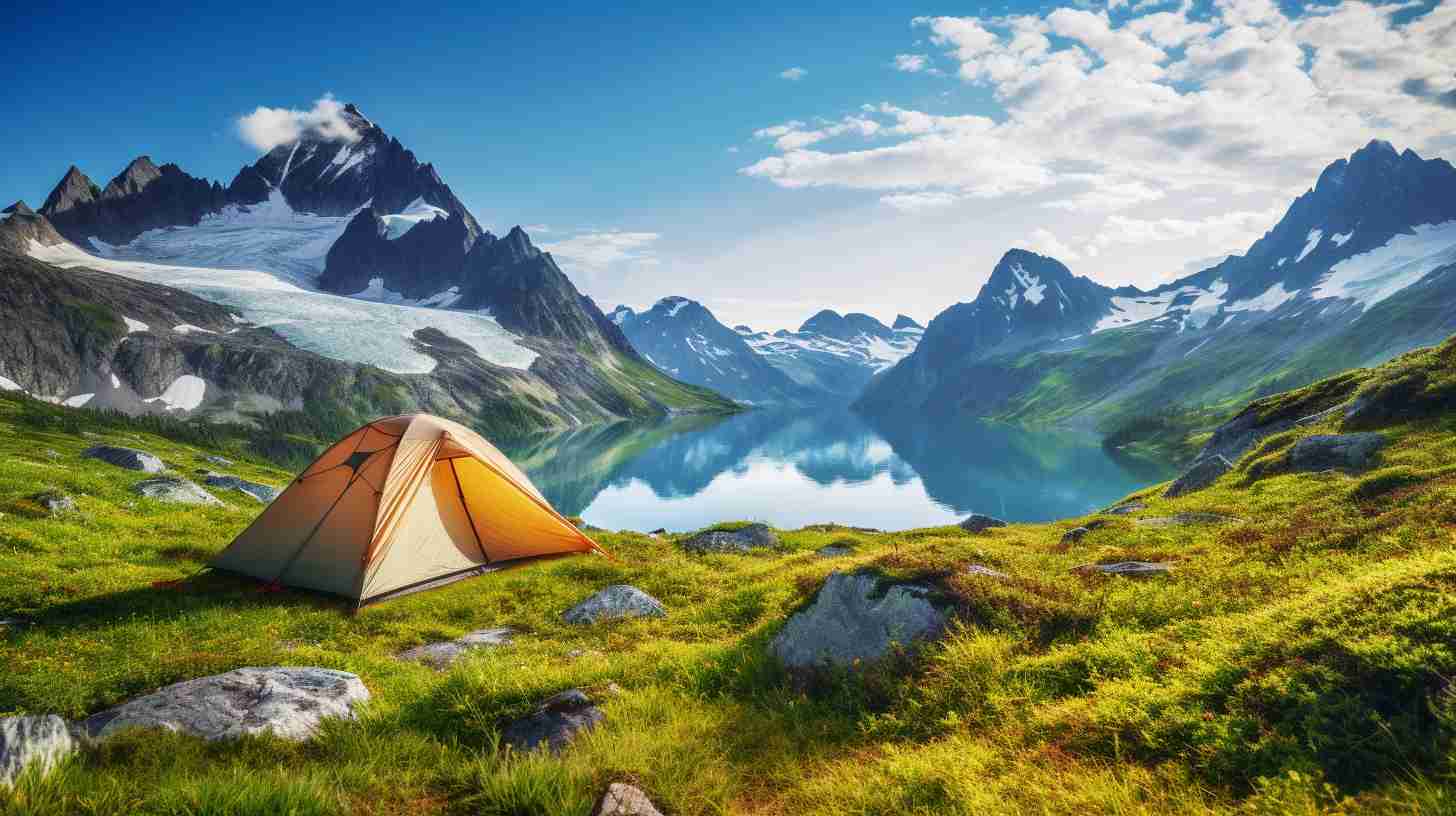
When it comes to camping destinations in 2024, you have plenty of options to choose from.
National parks offer breathtaking natural beauty, while state parks provide a mix of amenities and outdoor activities.
If you prefer to be near water, consider camping at a campground close to a lake or beach.
For those seeking solitude and adventure, wilderness areas offer a true escape from the hustle and bustle of everyday life.
Lastly, if you want to wake up to stunning scenic views, there are campgrounds that offer picturesque landscapes.
National Parks
Experience the breathtaking beauty and tranquility of national parks as you embark on the ultimate camping adventure in 2024. National parks offer a variety of camping destinations with stunning landscapes and diverse wildlife.
Here are some tips to enhance your national park camping experience:
-
Explore the extensive network of hiking trails that wind through the parks, allowing you to immerse yourself in nature’s wonders.
-
Take the time to carefully select your campsite, considering factors such as proximity to water sources, shade, and privacy.
-
Engage in wildlife watching, where you can witness animals in their natural habitats and capture unforgettable moments.
-
Immerse yourself in the peacefulness of the surroundings, allowing the serenity of nature to rejuvenate your mind and spirit.
-
Embrace the opportunity to disconnect from technology and reconnect with yourself and your loved ones, creating memories that will last a lifetime.
State Parks
As you continue your camping adventure in 2024, explore the diverse camping destinations offered by state parks, where you can discover unique landscapes and outdoor experiences.
State parks provide a wide range of activities for campers of all ages and interests. Whether you enjoy hiking, fishing, or birdwatching, there’s something for everyone.
Before heading to a state park, make sure to familiarize yourself with the camping regulations, such as check-in and check-out times and any restrictions on campfires or pets. It’s also advisable to make park reservations in advance to secure your spot.
State parks often offer amenities such as clean restroom facilities, picnic areas, and even swimming pools. Don’t forget to explore the park trails, which will lead you to breathtaking views and hidden gems within the park.
Campgrounds near Water Bodies
Discover picturesque campgrounds nestled near water bodies for a serene and refreshing camping experience in 2024. These campgrounds offer an array of waterfront activities, perfect for nature enthusiasts and adventure seekers alike.
-
Lakeside Campgrounds: Set up your tent or park your RV right by the tranquil waters of a lake. Wake up to stunning sunrises and enjoy swimming, kayaking, and paddleboarding throughout the day.
-
Beach Camping: Pitch your tent on sandy shores and fall asleep to the sound of crashing waves. Spend your days building sandcastles, sunbathing, and exploring the nearby coastal trails.
-
Riverside Camping: Embrace the soothing sounds of a flowing river as you set up camp alongside its banks. Take a dip in the crystal-clear water, go tubing or rafting, and enjoy peaceful fishing spots.
With these campgrounds near water bodies, you can immerse yourself in nature’s beauty while indulging in thrilling waterfront activities.
Wilderness Areas
Explore the untamed beauty of wilderness areas and embark on an unforgettable camping adventure in 2024. Wilderness exploration allows you to disconnect from the chaos of everyday life and reconnect with nature in its purest form. Backcountry camping in these remote areas offers a sense of solitude and tranquility that is hard to find elsewhere. Brush up on your survival skills and learn to thrive in the wilderness, as you navigate through rugged terrains and set up camp under the starlit sky. Capture the breathtaking landscapes through nature photography, and sharpen your wildlife tracking abilities as you encounter various species in their natural habitat. Immerse yourself in the wonders of untouched nature and create memories that will last a lifetime.
| Wilderness Exploration | Backcountry Camping |
|---|---|
| Survival Skills | Nature Photography |
| Wildlife Tracking |
Campgrounds with Scenic Views
Embark on an adventure to campgrounds with scenic views, where you can soak in the breathtaking landscapes that perfectly complement your wilderness exploration in 2024. Here are some reasons why these campgrounds are a must-visit:
-
Scenic Hikes: Lace up your boots and explore the trails that lead you to majestic vistas and hidden gems.
-
Photography Opportunities: Capture stunning shots of nature’s beauty at every turn, from vibrant sunsets to towering mountains.
-
Campfire Storytelling: Gather around the crackling fire and share tales of your adventures with fellow campers, creating memories that will last a lifetime.
-
Stargazing Spots: Lay back and marvel at the celestial wonders above, as you witness the brilliance of the night sky away from city lights.
-
Picnic Areas: Take a break from your outdoor activities and enjoy a peaceful meal surrounded by nature’s splendor.
These campgrounds with scenic views offer an unforgettable camping experience, immersing you in the beauty of the great outdoors while providing opportunities for exploration and relaxation.
Camping in Different Seasons
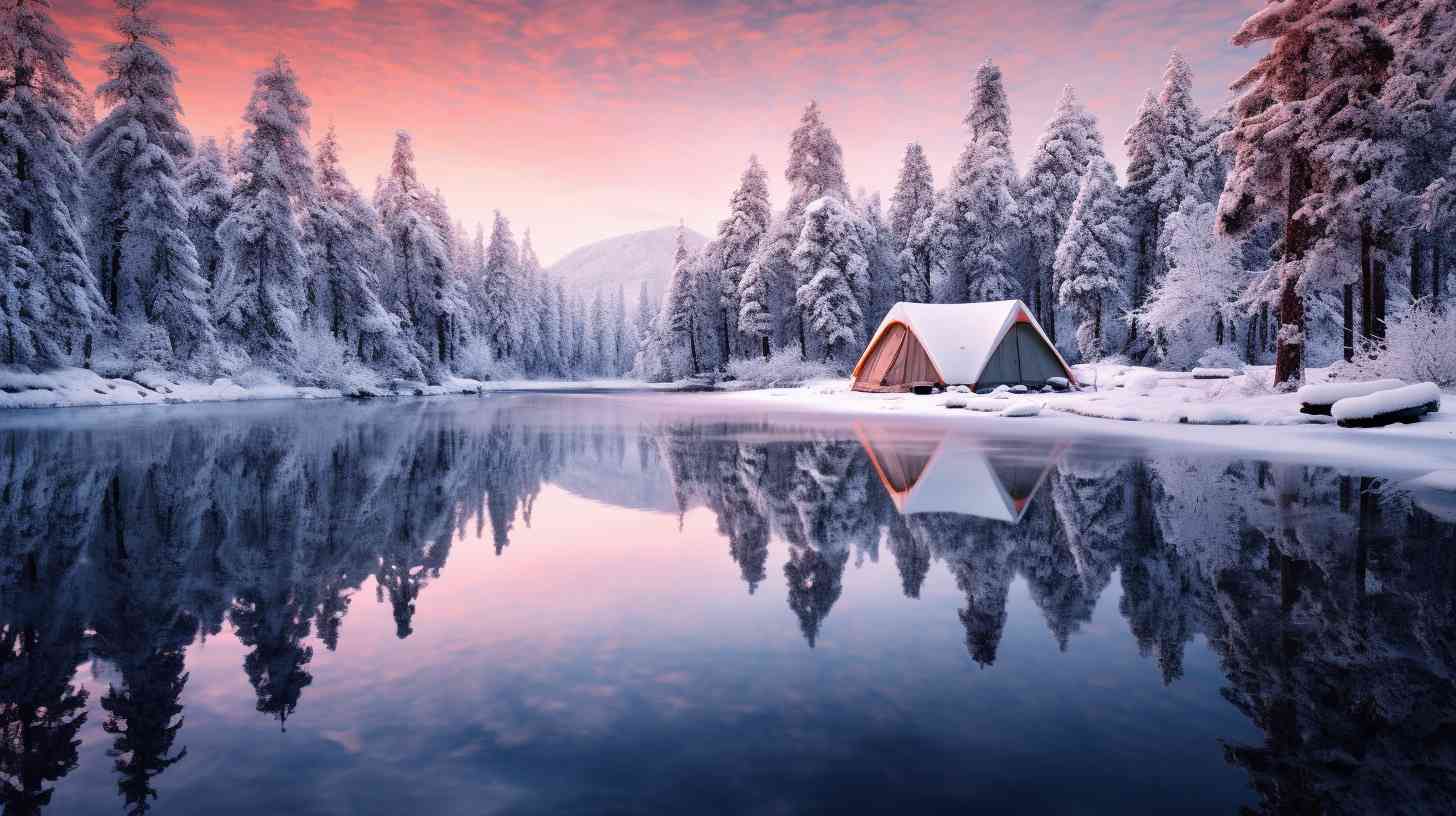
Are you ready to explore the wonders of camping in different seasons?
From the colorful blooms and mild temperatures of spring camping to the sunny days and refreshing swims of summer camping, each season offers a unique experience.
Don’t forget the vibrant foliage and cozy campfires of fall camping, or the serene beauty and snow-covered landscapes of winter camping.
There’s something for everyone, no matter the time of year.
Spring Camping
Spring is the perfect time to venture into the great outdoors and experience the wonders of camping. The weather is mild, the flowers are blooming, and nature is coming alive.
Here are some activities to make your spring camping experience unforgettable:
-
Campfire cooking: Whip up delicious meals over an open fire and savor the smoky flavors.
-
Hiking trails: Explore the beauty of nature by trekking through scenic trails with breathtaking views.
-
Camping and fishing: Cast your line into the crystal clear waters and try your luck at catching some fresh fish for dinner.
-
Camping wildlife watching: Observe the diverse wildlife that emerges during the spring season, from chirping birds to curious deer.
-
Relaxation: Unwind and recharge in the tranquil surroundings, listening to the sounds of nature and basking in the peaceful atmosphere.
Embrace the magic of spring camping and create memories that will last a lifetime.
Summer Camping
As the temperatures rise and the days grow longer, summer camping offers endless opportunities for outdoor adventure. It’s the perfect time to engage in a variety of summer activities and enjoy the great outdoors.
From playing outdoor games with friends and family to setting up camp on the beach, there are so many ways to make the most of your summer camping trip.
Take advantage of the warm weather by participating in thrilling water sports like kayaking, paddleboarding, or swimming. Explore the surrounding nature by hiking along picturesque trails and discovering hidden treasures along the way.
Summer camping is the ultimate way to soak up the sun, connect with nature, and create unforgettable memories.
Fall Camping
With the changing colors of leaves and cooler temperatures, fall camping presents a new and exciting opportunity to embrace the beauty of nature. Here are some tips to make the most out of your fall camping experience:
- Enjoy the stunning fall foliage by going on hikes and nature walks.
- Create a cozy camping atmosphere by bringing along warm blankets and comfortable seating.
- Engage in autumn activities like apple picking, pumpkin carving, and hayrides.
- Try out delicious fall recipes like roasted marshmallows, hot apple cider, and pumpkin pie.
- Take advantage of seasonal camping discounts and promotions to make your trip more affordable.
Fall camping allows you to witness the breathtaking transformation of nature while enjoying the comforts of a cozy campsite. So pack your bags, grab your favorite fall sweater, and immerse yourself in the beauty of the season.
Winter Camping
Are you ready for the exhilarating adventure of winter camping?
Winter camping offers a unique experience filled with exciting winter activities and breathtaking landscapes.
To ensure a successful trip, it’s crucial to have the right cold weather gear and prioritize winter camping safety. When choosing your gear, invest in a warm and insulated sleeping bag, a sturdy tent that can withstand snowfall, and layers of clothing to stay warm in freezing temperatures.
It’s also important to research and choose suitable winter camping destinations, such as national parks with winter camping facilities.
Lastly, remember some essential winter camping tips, such as staying hydrated, avoiding cotton clothing, and keeping emergency supplies on hand.
Camping Etiquette

When camping, it’s important to be mindful of others and follow proper camping etiquette. This includes respecting quiet hours, keeping your campsite clean, and being considerate of other campers.
Additionally, proper waste disposal and campfire etiquette are essential for maintaining a pleasant camping experience for everyone.
Respecting Quiet Hours
During your camping experience, it’s important to respect quiet hours. This etiquette ensures a peaceful atmosphere and allows everyone to enjoy their time in nature. Here are some noise control measures and activities to help you respect fellow campers during quiet hours:
- Keep voices low and avoid shouting or loud conversations.
- Use headphones or keep the volume low when listening to music or watching videos.
- Avoid using loud generators or machinery during quiet hours.
Engage in quiet activities such as:
- Reading
- Stargazing
- Enjoying a campfire
Be mindful of noise when:
- Setting up your campsite
- Packing up your campsite.
Campsite Cleanliness
To maintain a clean and organized camping environment, it’s essential to prioritize campsite cleanliness as part of camping etiquette.
Keeping your campsite clean not only promotes a pleasant atmosphere but also ensures the safety and well-being of everyone around you.
Start by selecting a campsite that’s already well-maintained and free of litter. Once you’ve set up camp, make sure to properly dispose of any trash or food waste in designated containers to prevent attracting wildlife.
Remember to follow campfire safety guidelines and properly extinguish your campfire before leaving the site.
Keeping your campsite organized will also help minimize clutter and make it easier for you to find your belongings.
Respecting Other Campers
Be considerate of other campers by practicing good camping etiquette. When you’re out enjoying the great outdoors, it’s important to remember that you’re not the only one trying to have a peaceful and enjoyable experience. Here are some tips to ensure you show courtesy towards other campers:
-
Campground Etiquette: Familiarize yourself with the specific rules and regulations of the campground you’re staying at, and make sure to follow them.
-
Noise Control: Keep the volume down, especially during quiet hours. Avoid playing loud music or engaging in noisy activities that can disturb your fellow campers.
-
Campsite Decorum: Keep your campsite clean and organized. Dispose of trash properly and leave the site in the same condition as you found it.
-
Privacy Consideration: Respect the personal space of other campers. Avoid walking through occupied campsites and keep a distance from neighboring sites.
-
Courtesy Towards Other Campers: Be friendly and considerate towards your fellow campers. Offer assistance if needed and always treat others with respect.
Proper Waste Disposal
Dispose of your waste properly to maintain a clean and environmentally-friendly camping experience. Proper waste disposal is essential for effective waste management and reducing the environmental impact of camping activities.
To achieve this, campgrounds are equipped with waste disposal systems that include designated bins for different types of waste, such as general waste, recyclables, and organic waste. Recycling initiatives are also implemented to ensure that recyclable materials are separated and processed correctly.
Additionally, waste reduction strategies, such as encouraging campers to bring reusable containers and minimizing packaging, are promoted.
By following these waste disposal practices, you contribute to the preservation of the natural environment and help create a sustainable camping experience for everyone.
Campfire Etiquette
Ensure a respectful and enjoyable camping experience for all by following proper campfire etiquette. Here are some tips to help you make the most of your campfire experience:
-
Campfire songs: Singing around the campfire is a beloved tradition. Choose popular tunes or create your own campfire songs to entertain and unite everyone.
-
Campfire stories: Share spooky tales or heartwarming anecdotes to create a captivating atmosphere. Encourage others to contribute their own stories for a memorable campfire storytelling session.
-
Campfire games: Play classic games like charades or create your own campfire games to keep everyone entertained. From word association to storytelling games, the options are endless.
-
Campfire traditions: Embrace and participate in campfire traditions specific to your camping group or location. These traditions can provide a sense of connection and belonging.
-
Campfire rituals: Incorporate rituals like toasting marshmallows, making s’mores, or passing around a talking stick to ensure everyone has a chance to share their thoughts and experiences.
Camping Safety
When it comes to camping safety, there are several key points to keep in mind.
First, it’s important to practice campfire safety to prevent accidents and wildfires.
Additionally, being aware of wildlife safety measures can help you avoid dangerous encounters with animals.
Lastly, knowing how to navigate and read maps, as well as being prepared for emergencies and changing weather conditions, are essential for a safe camping experience.
Campfire Safety
To safely enjoy your camping experience, it’s important to be mindful of campfire safety. Here are some essential tips to ensure a safe and enjoyable campfire:
-
Fire Prevention: Clear the area from any flammable materials like dry grass or leaves before starting a campfire.
-
Campfire Regulations: Familiarize yourself with the local regulations regarding campfires, such as restrictions on fire size and location.
-
Campfire Safety Tips: Keep a safe distance from the campfire and never leave it unattended. Always have a bucket of water or a fire extinguisher nearby.
-
Campfire Extinguishing Techniques: To extinguish the fire, pour water over the embers, stirring them with a shovel until they’re completely out.
-
Campfire Safety Equipment: Carry essential safety equipment, including fire-resistant gloves, a shovel, and a bucket.
Wildlife Safety
After taking necessary precautions for campfire safety, it’s important to also be aware of wildlife safety during your camping experience. When exploring wildlife habitats, it’s crucial to respect the natural environment and follow guidelines for wildlife conservation.
While wildlife encounters can be exciting, it’s essential to observe wildlife from a safe distance to avoid disturbing their behavior or causing harm to yourself. Keep in mind that animals have their own instincts and may become aggressive if they feel threatened.
Avoid feeding or approaching wild animals, as this can disrupt their natural behavior and potentially create dangerous situations. Remember, the goal of wildlife observation is to appreciate their beauty and learn from a distance while ensuring their safety and yours.
Weather Safety
Ensure your safety while camping by staying prepared for any weather conditions. Weather forecasting is essential to know what to expect during your camping trip. Be sure to check the weather forecast before you leave and pack accordingly.
Here are some important tips to help you stay safe in different weather situations:
- Have emergency shelters like tents or tarps ready in case of sudden changes in weather.
- Learn about lightning safety and avoid open areas during thunderstorms.
- If you’re camping in extreme temperatures, bring proper clothing and equipment to stay warm or cool.
- Prepare for severe weather by packing extra food, water, and supplies in case you need to stay in your campsite for an extended period.
- Always have a plan in case of emergencies and be aware of the nearest emergency services in the area.
Emergency Preparedness
Stay prepared for emergencies and ensure your safety while camping by following these essential tips for emergency preparedness.
-
Conduct regular emergency drills to familiarize yourself with evacuation procedures and ensure everyone in your group knows what to do in case of an emergency.
-
Always keep emergency supplies stocked, including first aid kits, flashlights, extra batteries, non-perishable food, and water.
-
Establish a reliable emergency communication plan with your group, including designated meeting points and emergency contact information.
-
Familiarize yourself with the campground’s emergency evacuation routes and follow instructions from park rangers or campground staff.
-
In case of an emergency, remain calm and follow emergency response protocols to ensure the safety and well-being of yourself and others.
Navigation and Map Reading
To navigate safely while camping, familiarize yourself with map reading techniques and ensure you have the necessary tools for accurate navigation. Here are some key points to help you enjoy your camping experience:
-
Map Reading Techniques: Learn how to read and interpret maps, including understanding symbols, contour lines, and scale.
-
Using a Compass: Master the art of using a compass to determine direction and orient yourself on the map.
-
Orienteering Basics: Practice orienteering skills such as using landmarks, triangulation, and dead reckoning to navigate in the wilderness.
-
GPS Navigation: Familiarize yourself with GPS devices and their functionality for backup navigation and tracking your location.
-
Topographic Map Interpretation: Understand the terrain features represented on topographic maps and how they can aid your navigation.
Frequently Asked Questions
What Are the Best Camping Spots for Stargazing?
Looking for the best camping spots for stargazing? Join astronomy clubs, rent telescopes, and explore dark sky reserves. Get astro photography tips and find the best time for stargazing. It’s an out-of-this-world experience!
How Can I Protect My Food From Bears While Camping?
To protect your food from bears while camping, use bear resistant containers or cook away from your campsite. Hanging food bags is another option. Remember to follow bear safety measures to ensure a peaceful camping experience.
What Types of First Aid Supplies Should I Bring on a Camping Trip?
When camping, it’s important to bring first aid supplies. Prevent insect bites with bug spray, treat sprained ankles with an ACE bandage, manage burns with burn cream, handle allergic reactions with antihistamines, and deal with cuts and scrapes using band-aids and antiseptic ointment.
Are There Any Restrictions on Bringing Pets to Campsites?
When camping, some campsites are as pet-friendly as a leash-free dog park, while others have rules for bringing pets. Make sure to check if the Ultimate Camping in 2024 allows camping with cats or offers pet-friendly hiking trails.
Can I Use My Hammock Instead of a Tent for Camping?
Yes, you can use your hammock instead of a tent for camping. Hammock camping offers several benefits such as comfort, portability, and easy setup. Don’t forget to bring hammock accessories for a great camping experience.
Conclusion
So, if you’re looking for the ultimate camping experience in 2024, make sure to explore the various options available to you, such as tent camping, RV camping, and backpacking camping. Choose your campsite wisely and enjoy the thrill of campfire cooking.
Don’t forget to explore different camping destinations and experience the beauty of nature in different seasons. Remember to follow camping etiquette and prioritize safety at all times.
By investigating the truth of these theories, we can enhance our understanding and make informed choices for an unforgettable camping adventure.
Happy camping!
Disclaimer: Some information is provided through AI. Users should always conduct their own research and consult with qualified professionals before making any decisions.Affiliate information declaration: We may earn revenue from the products referred on this page and participate in affiliate programs.